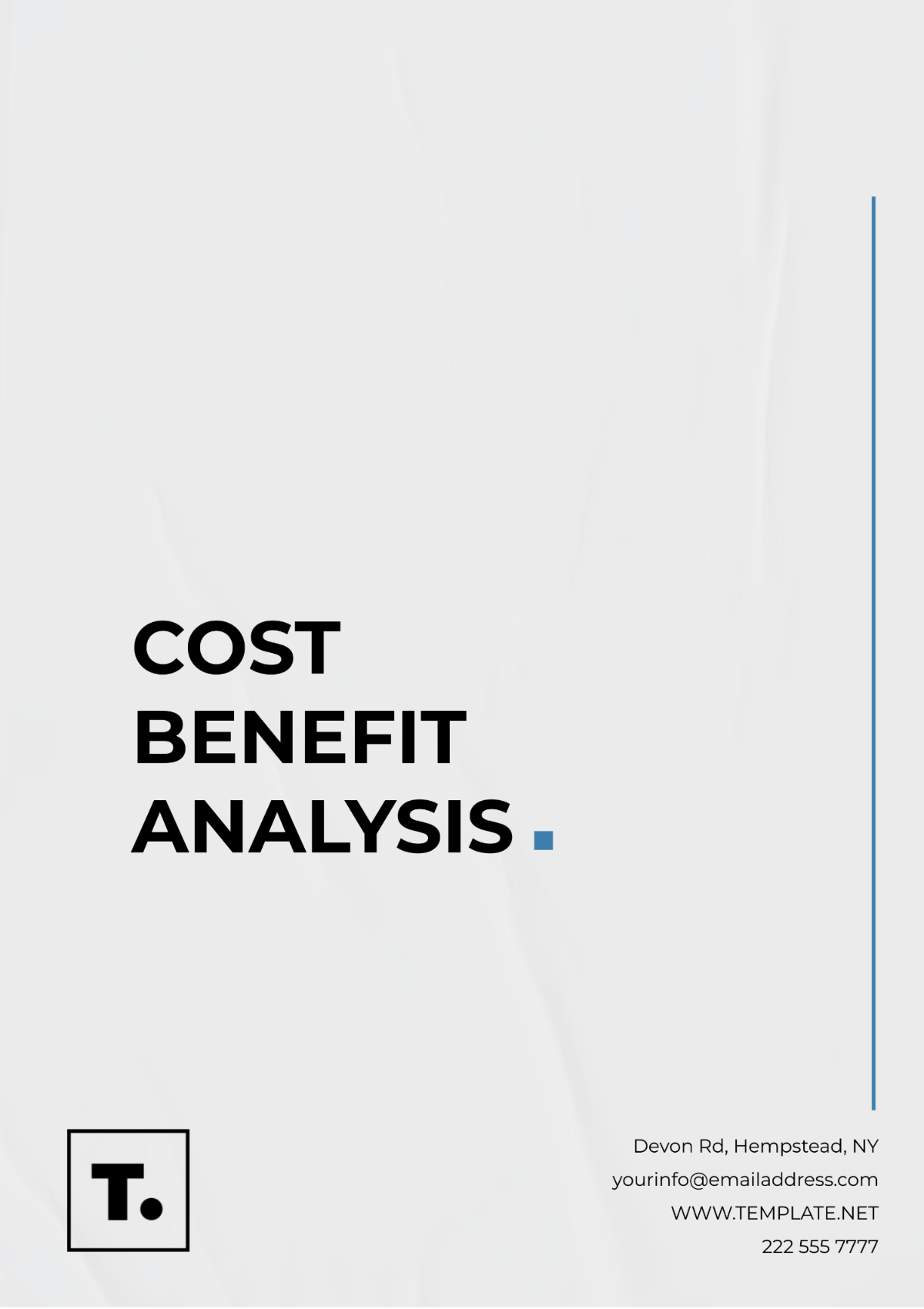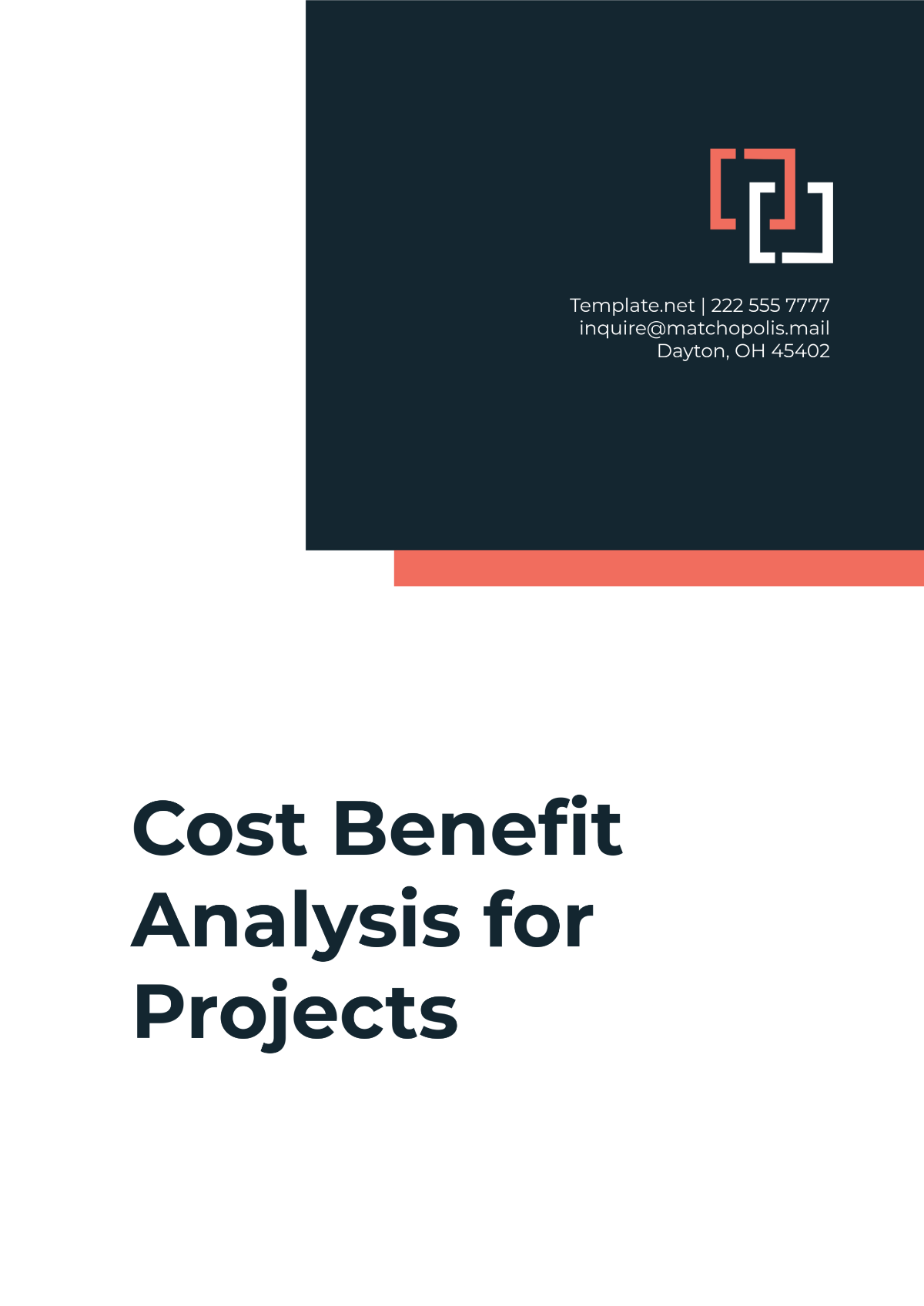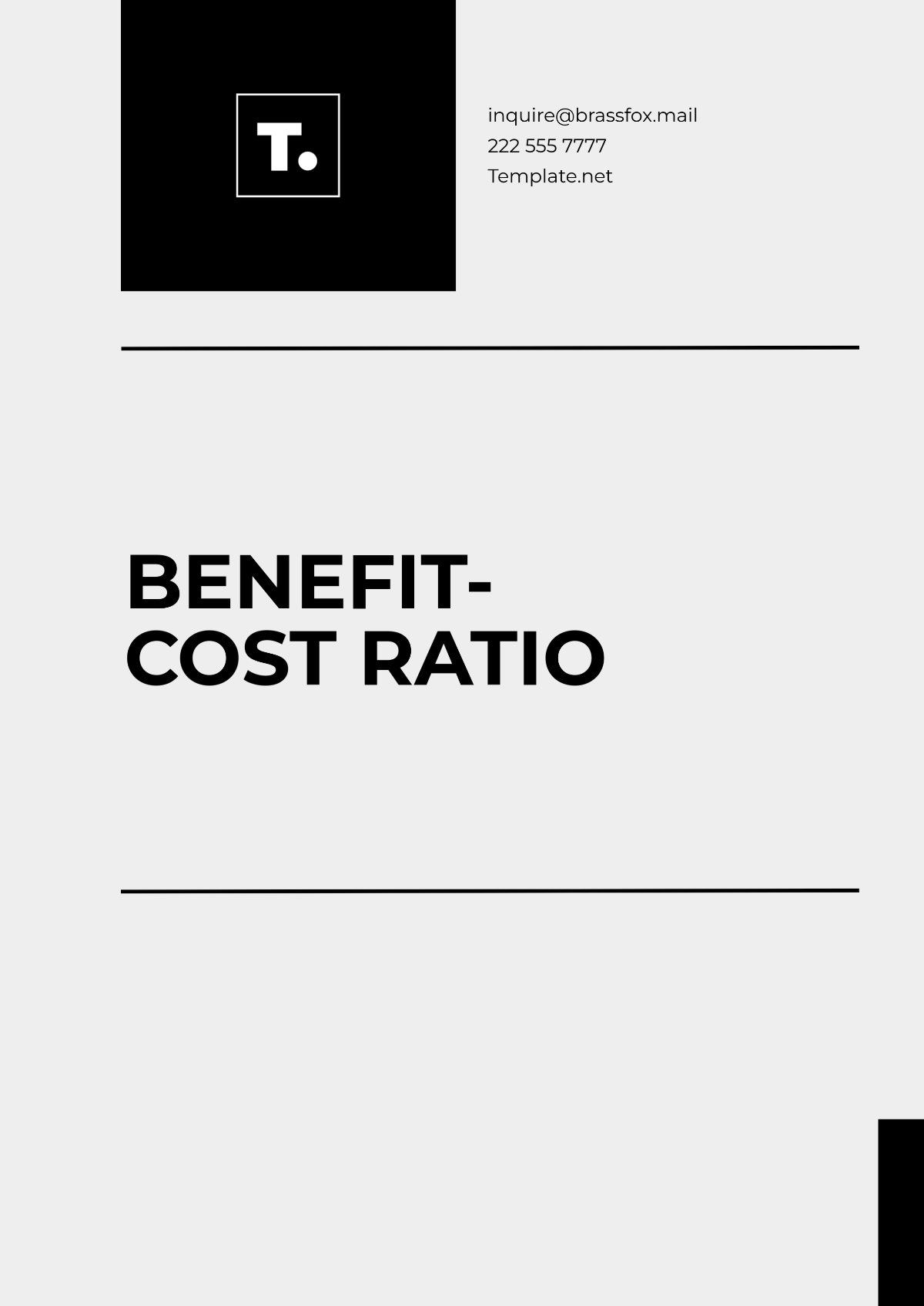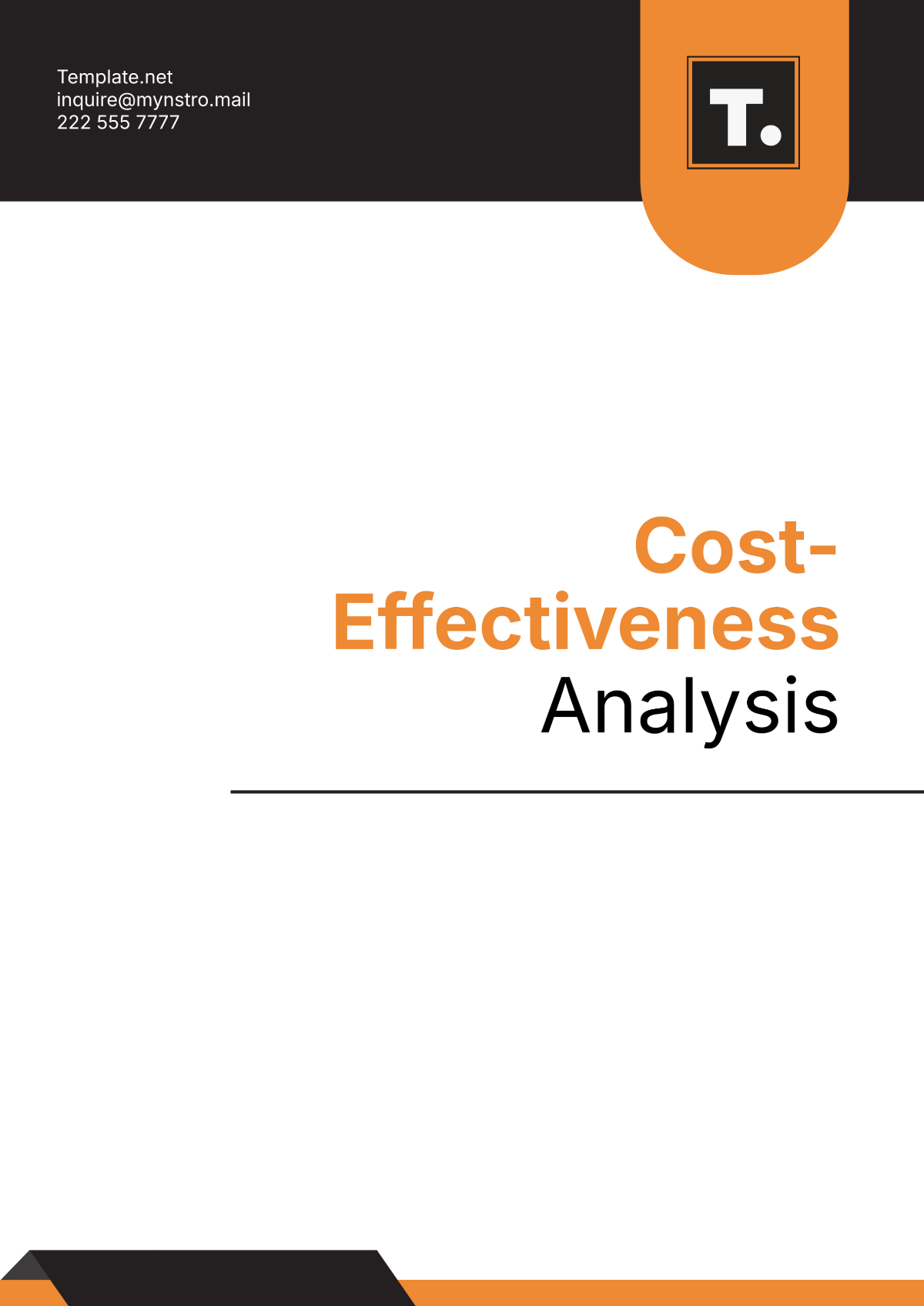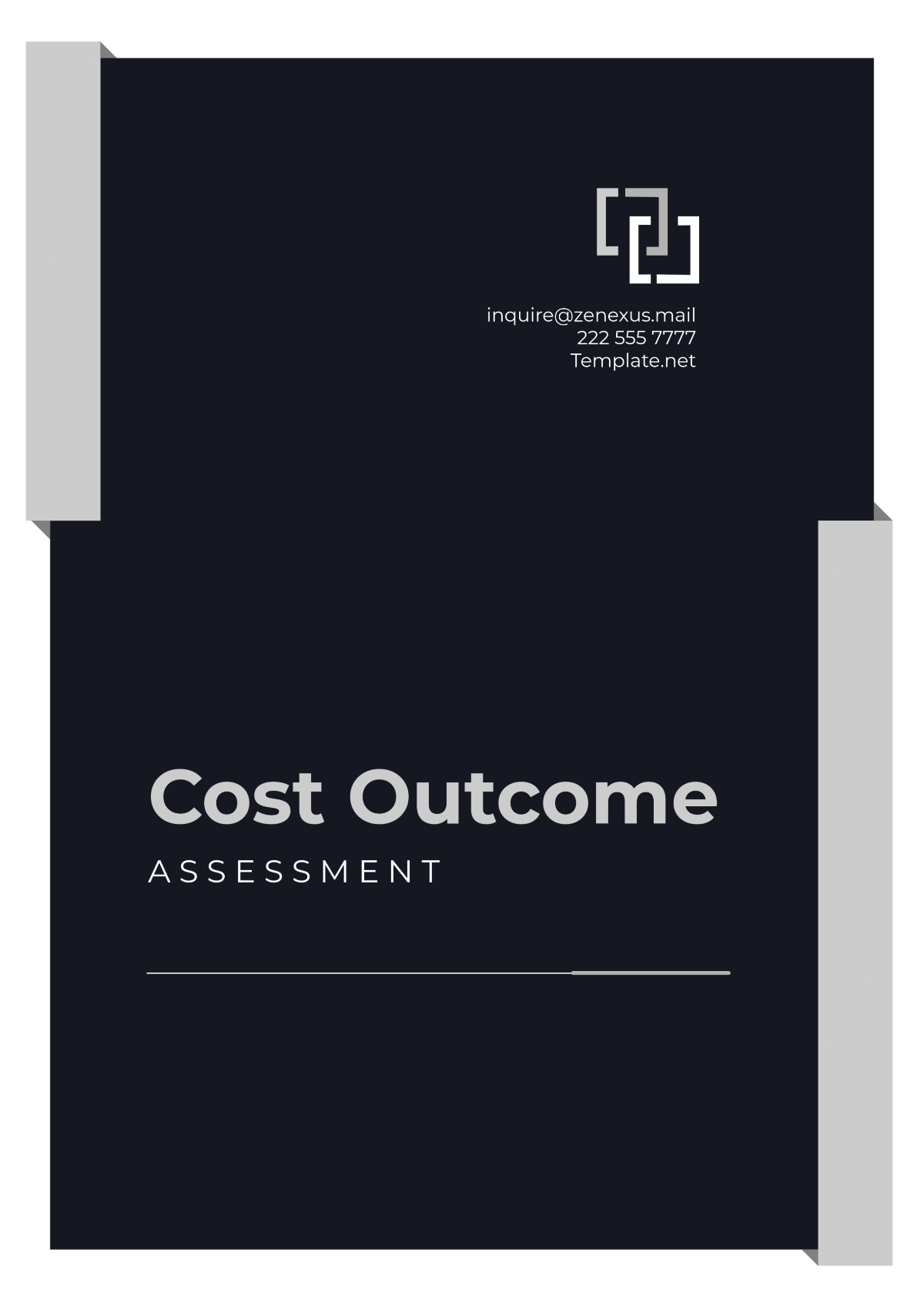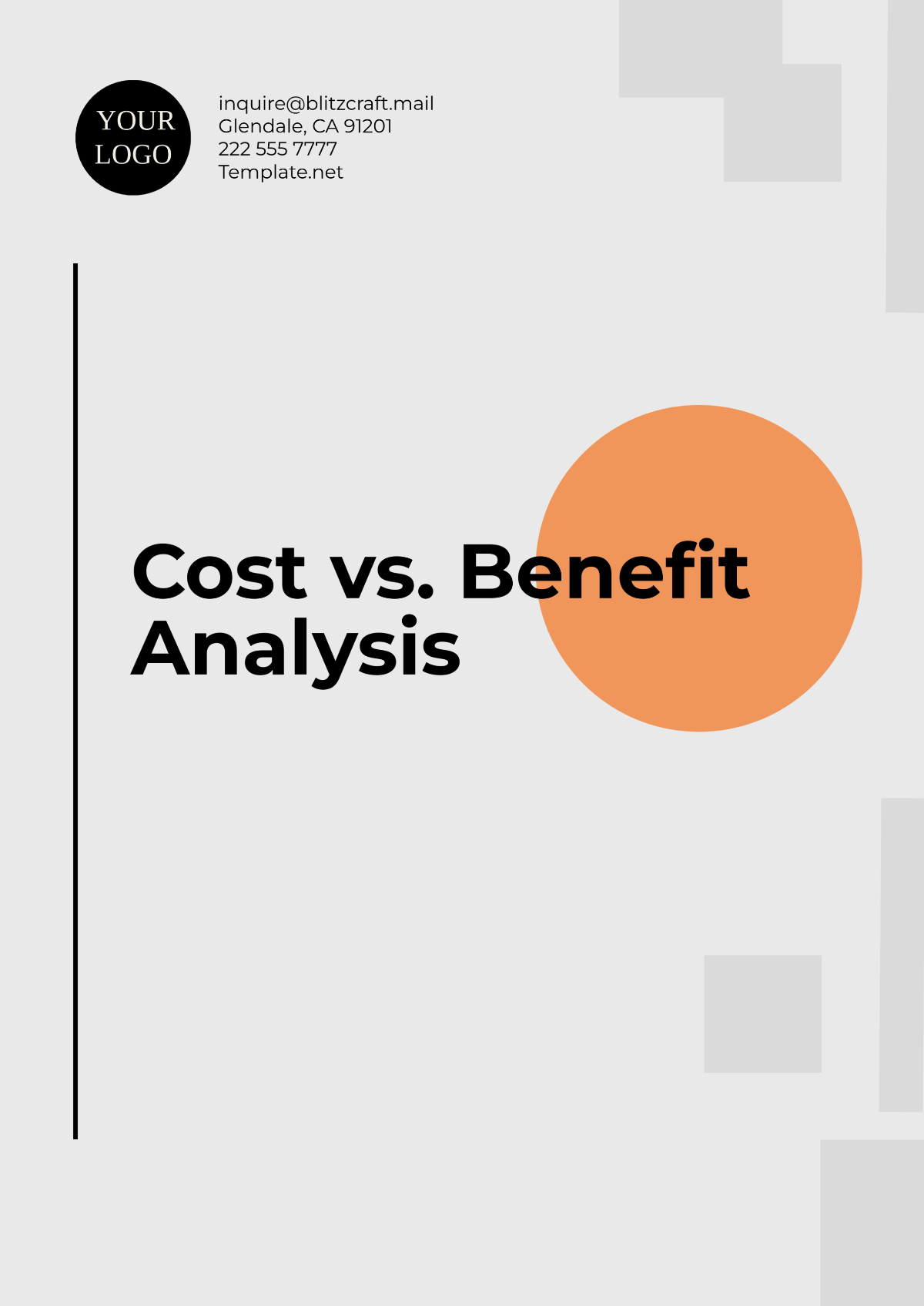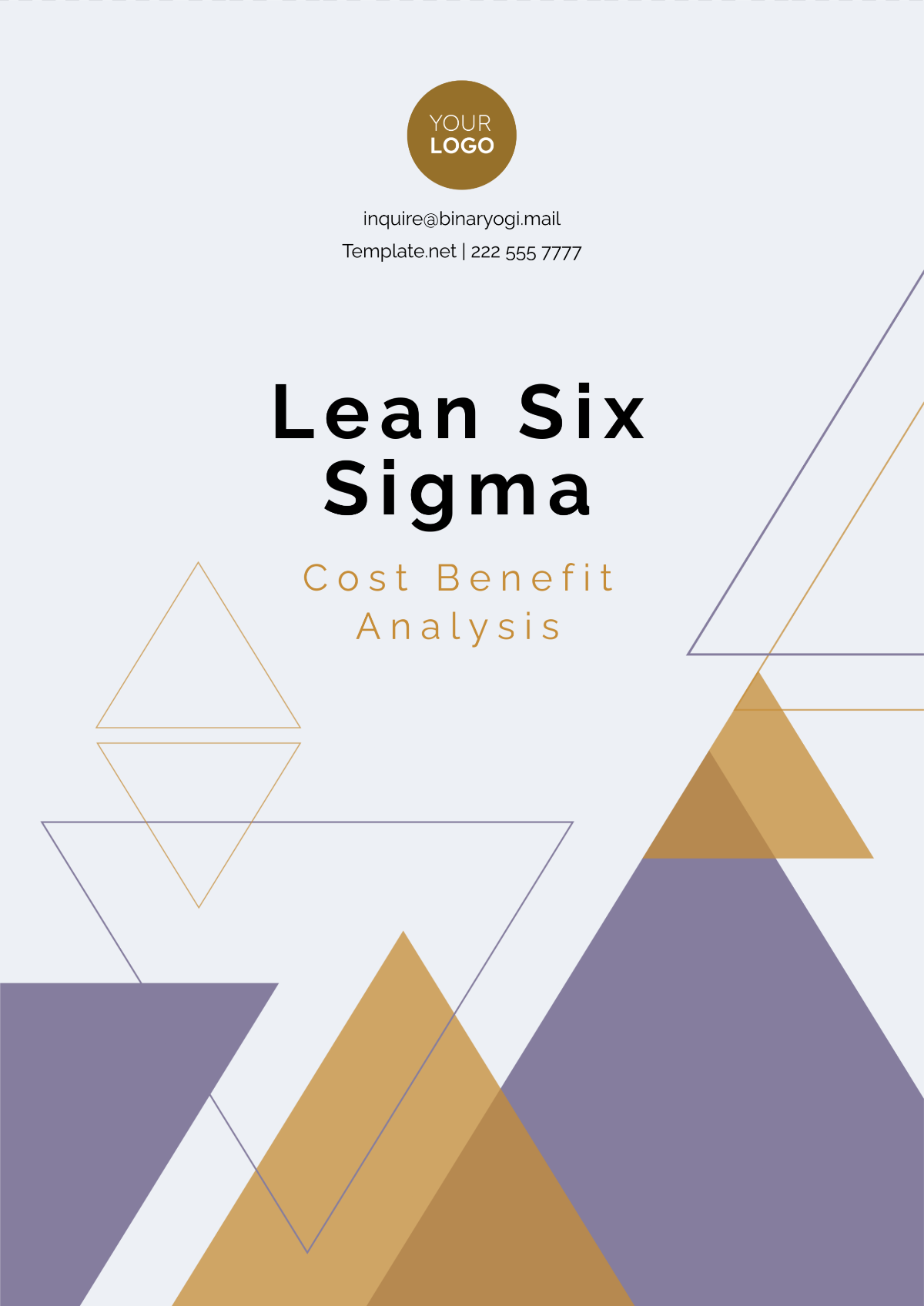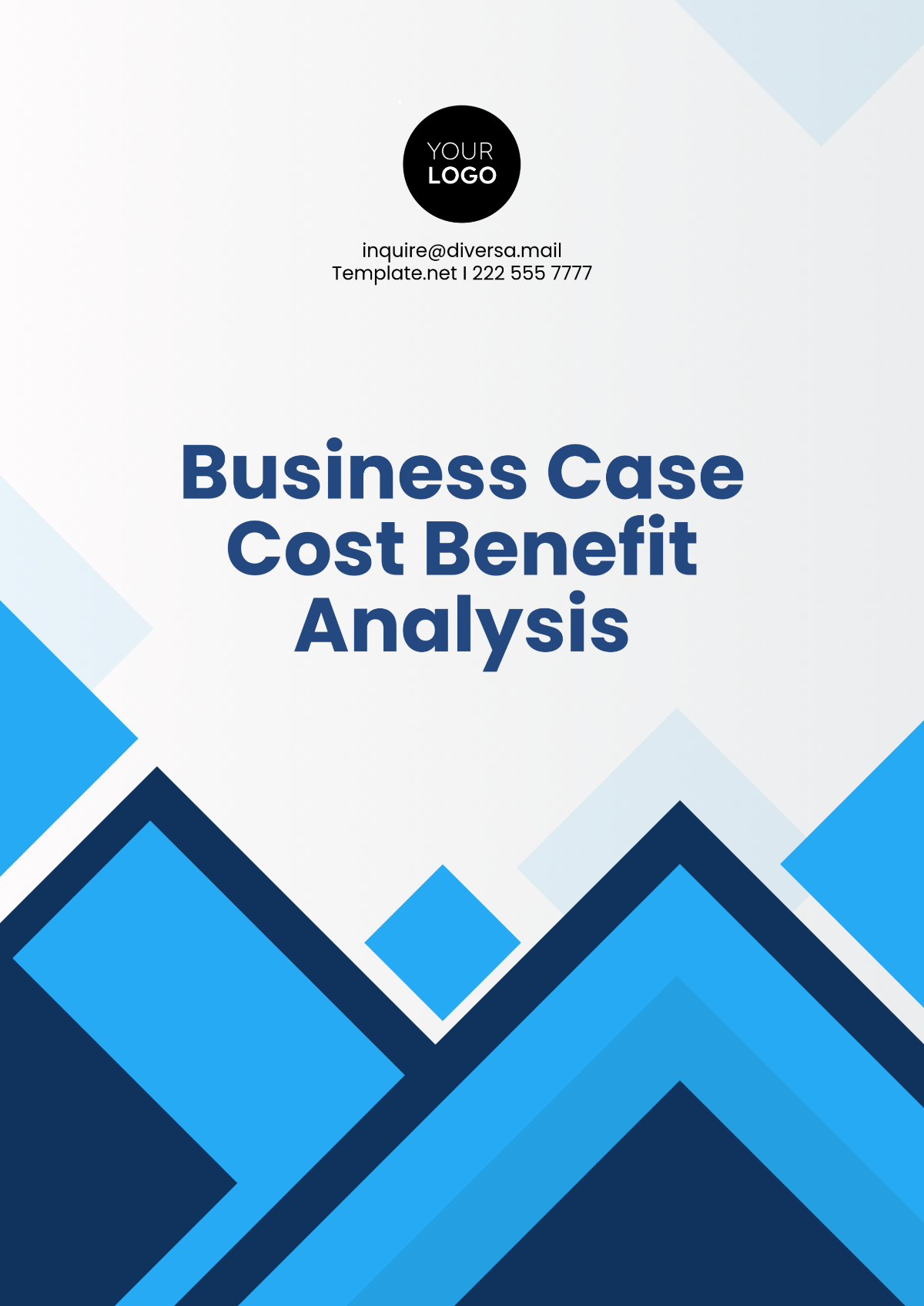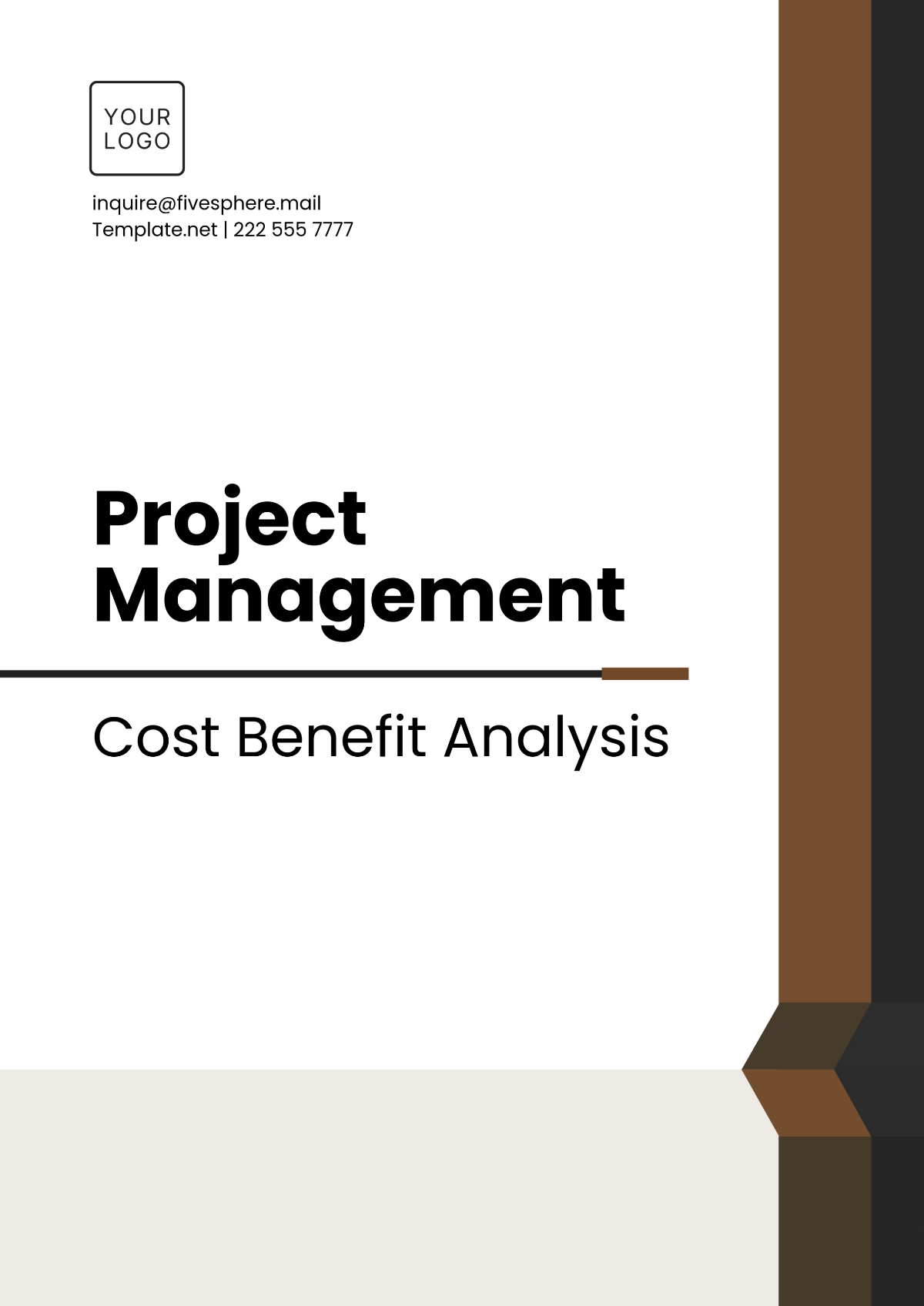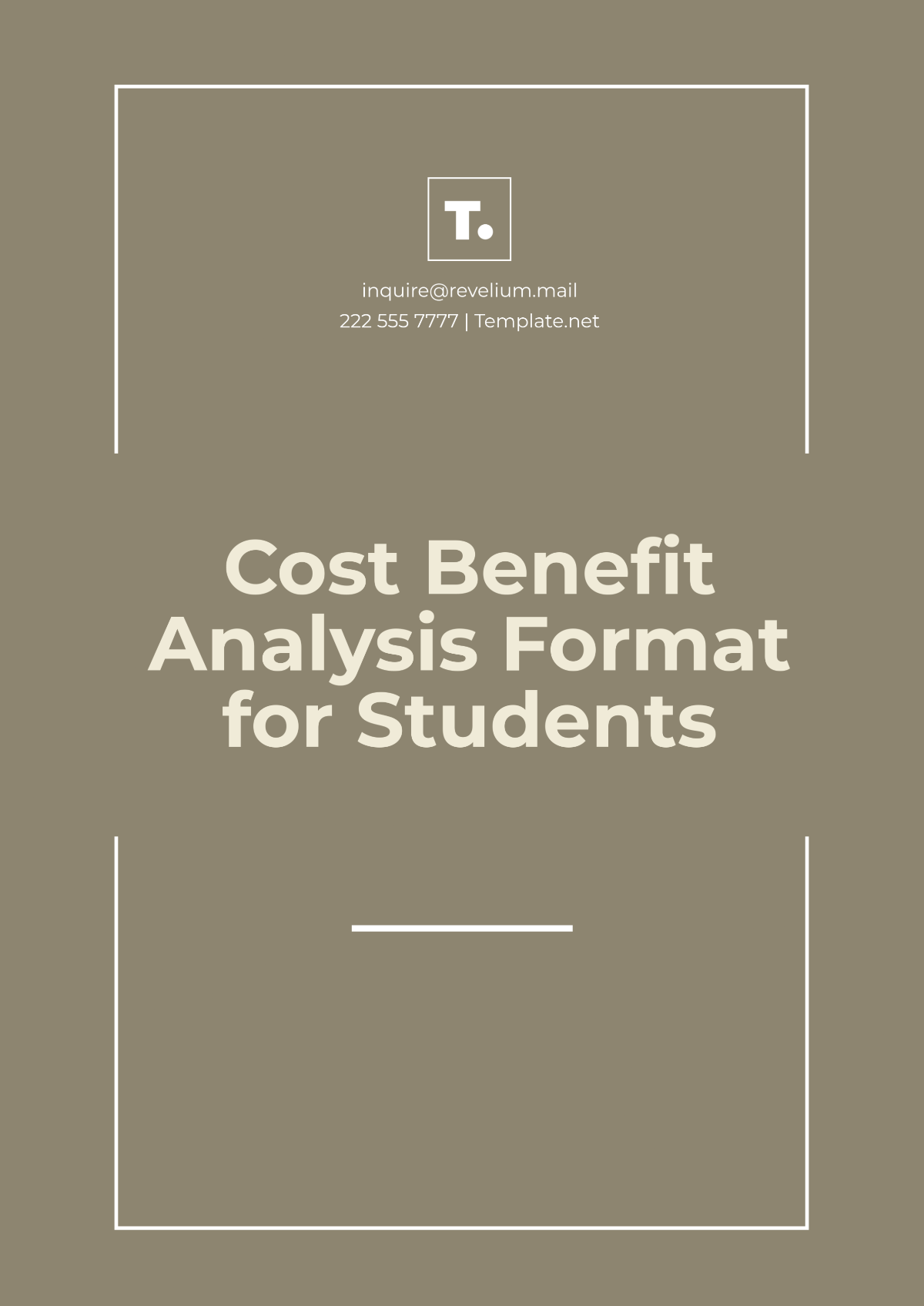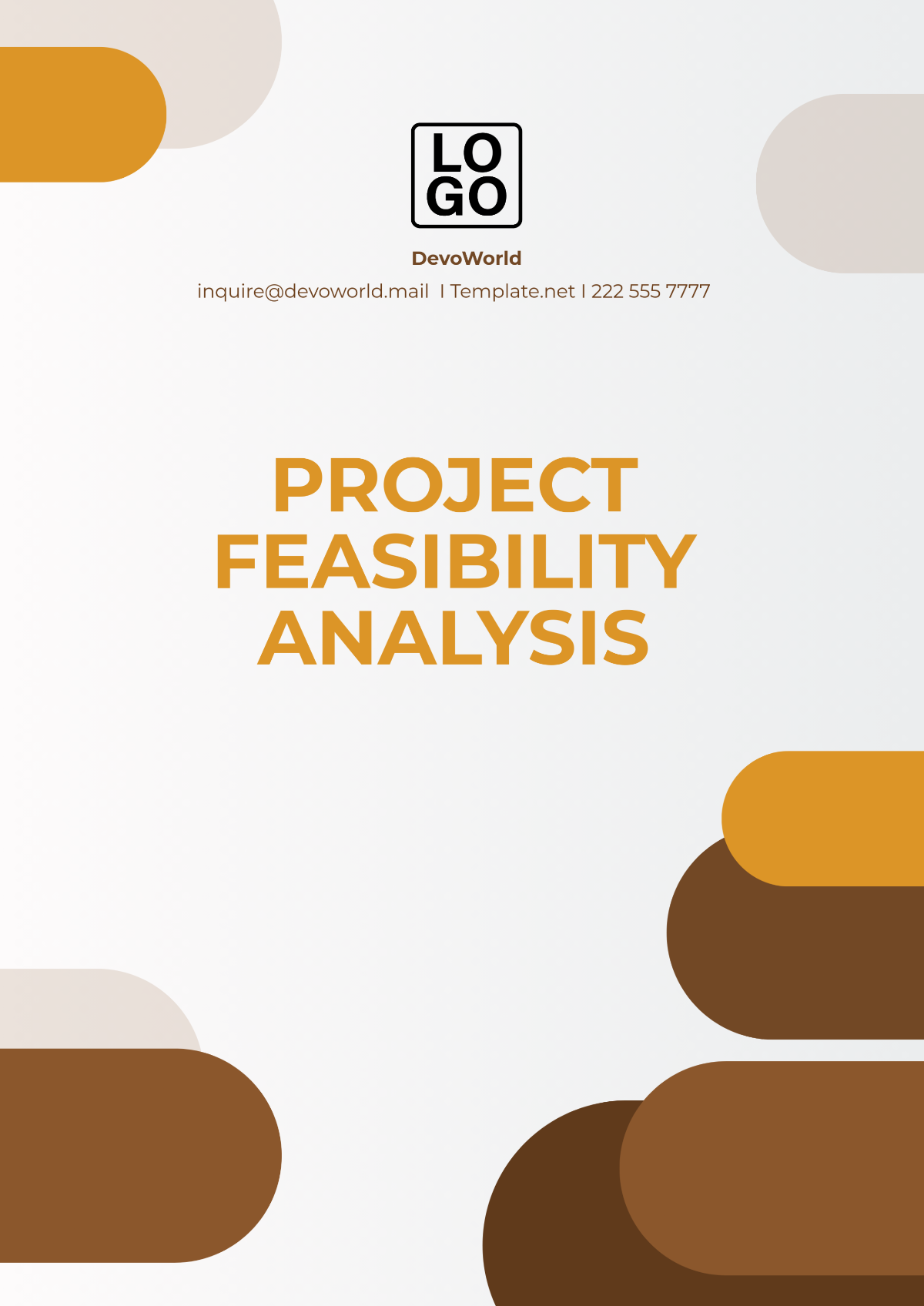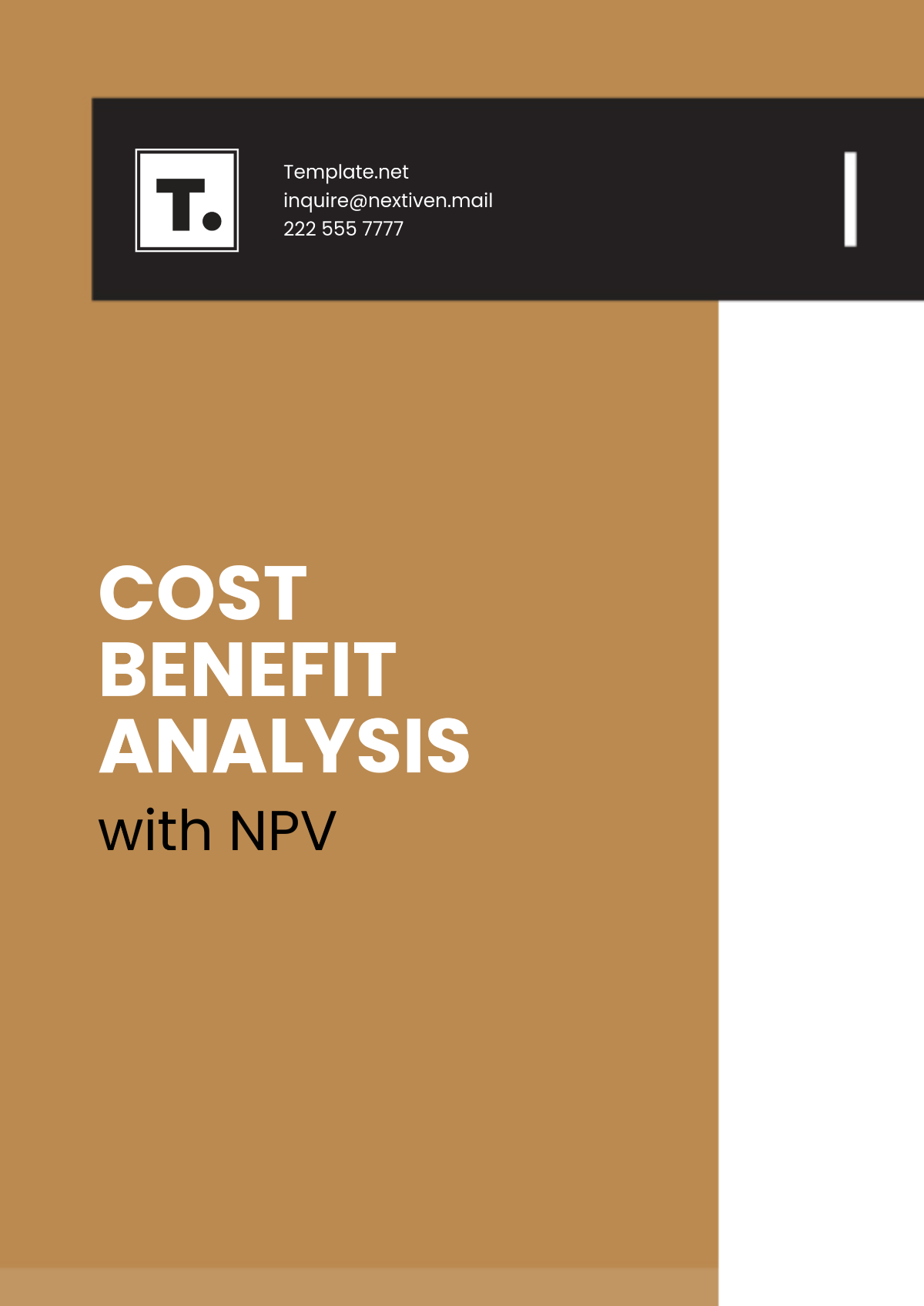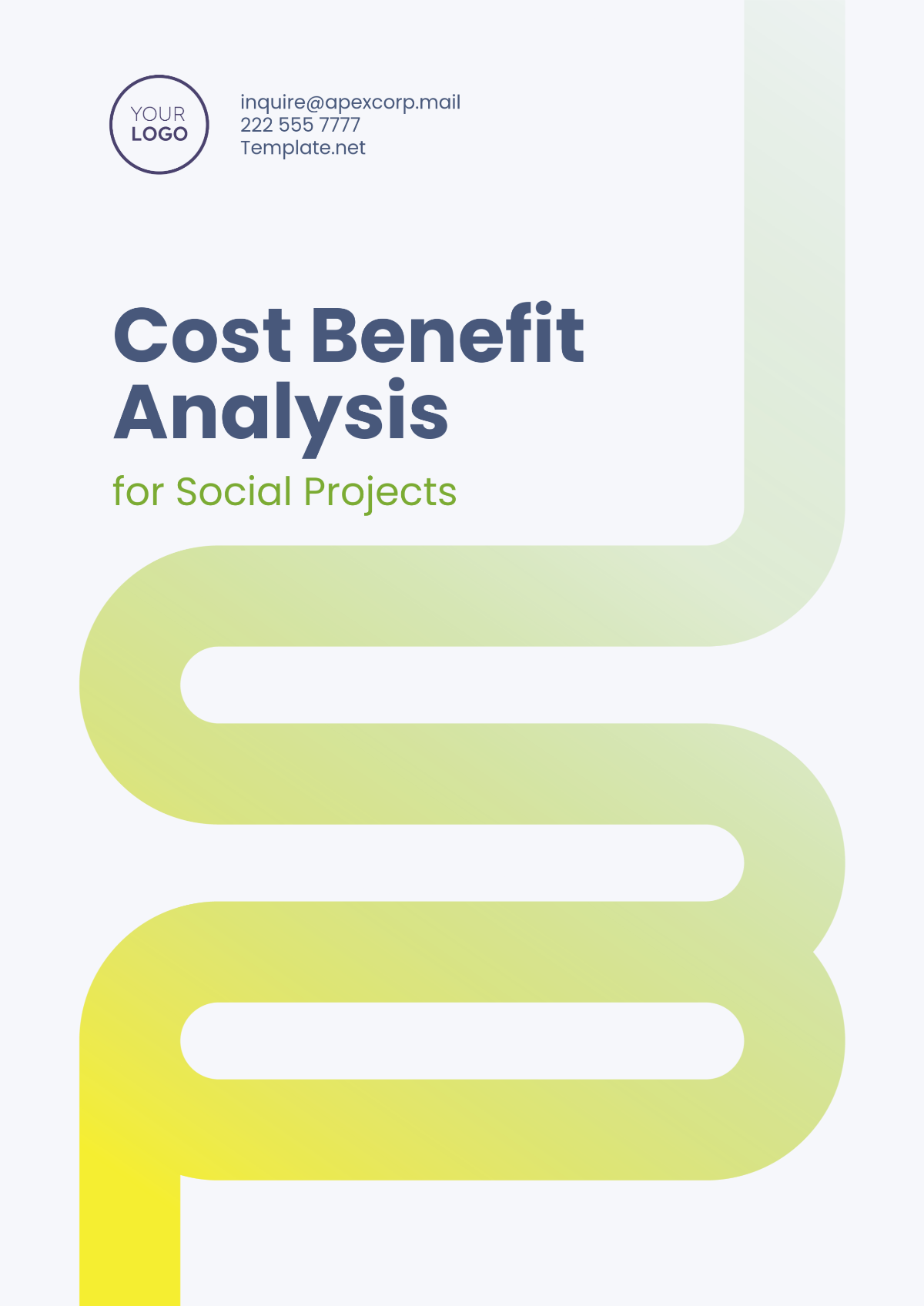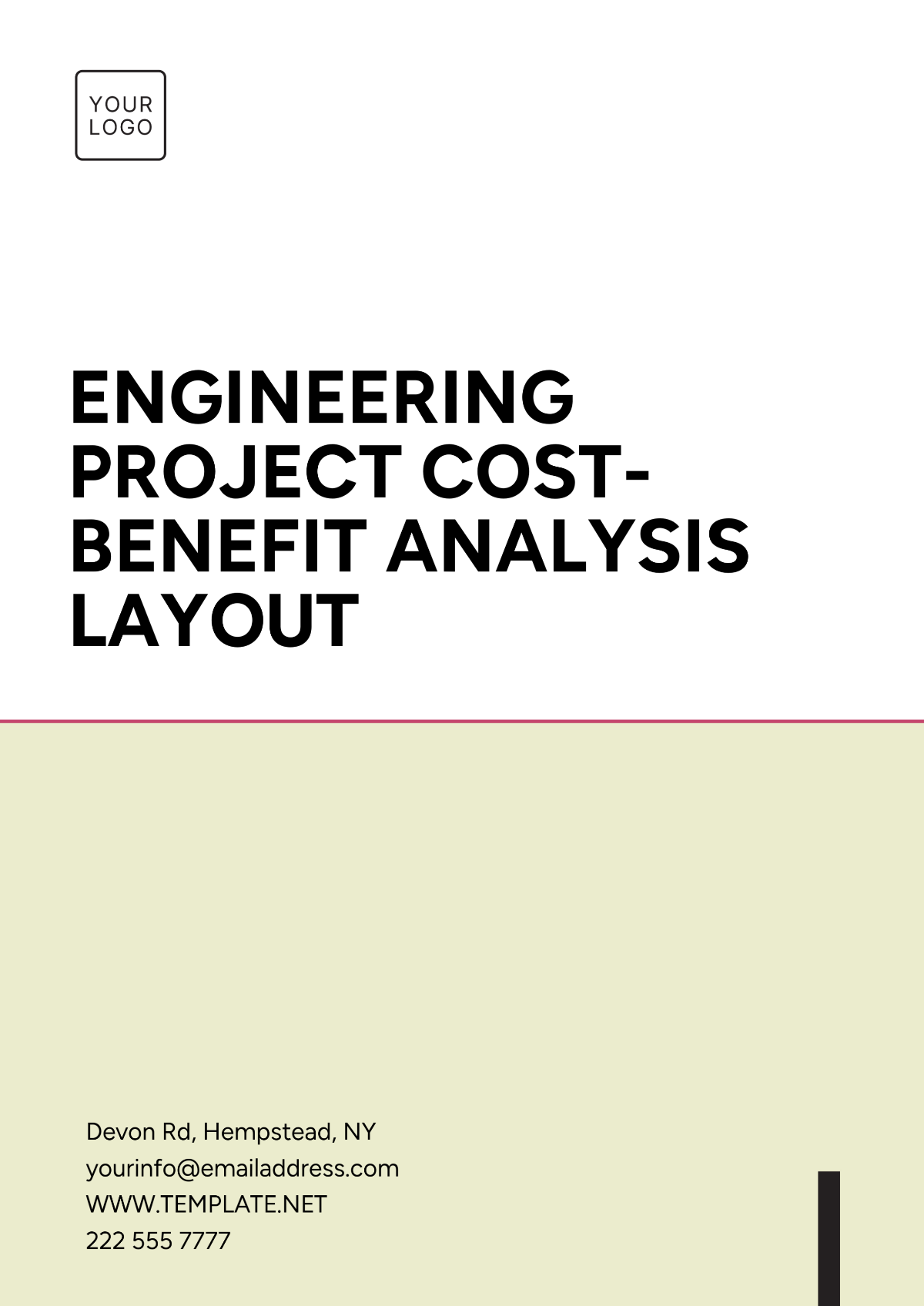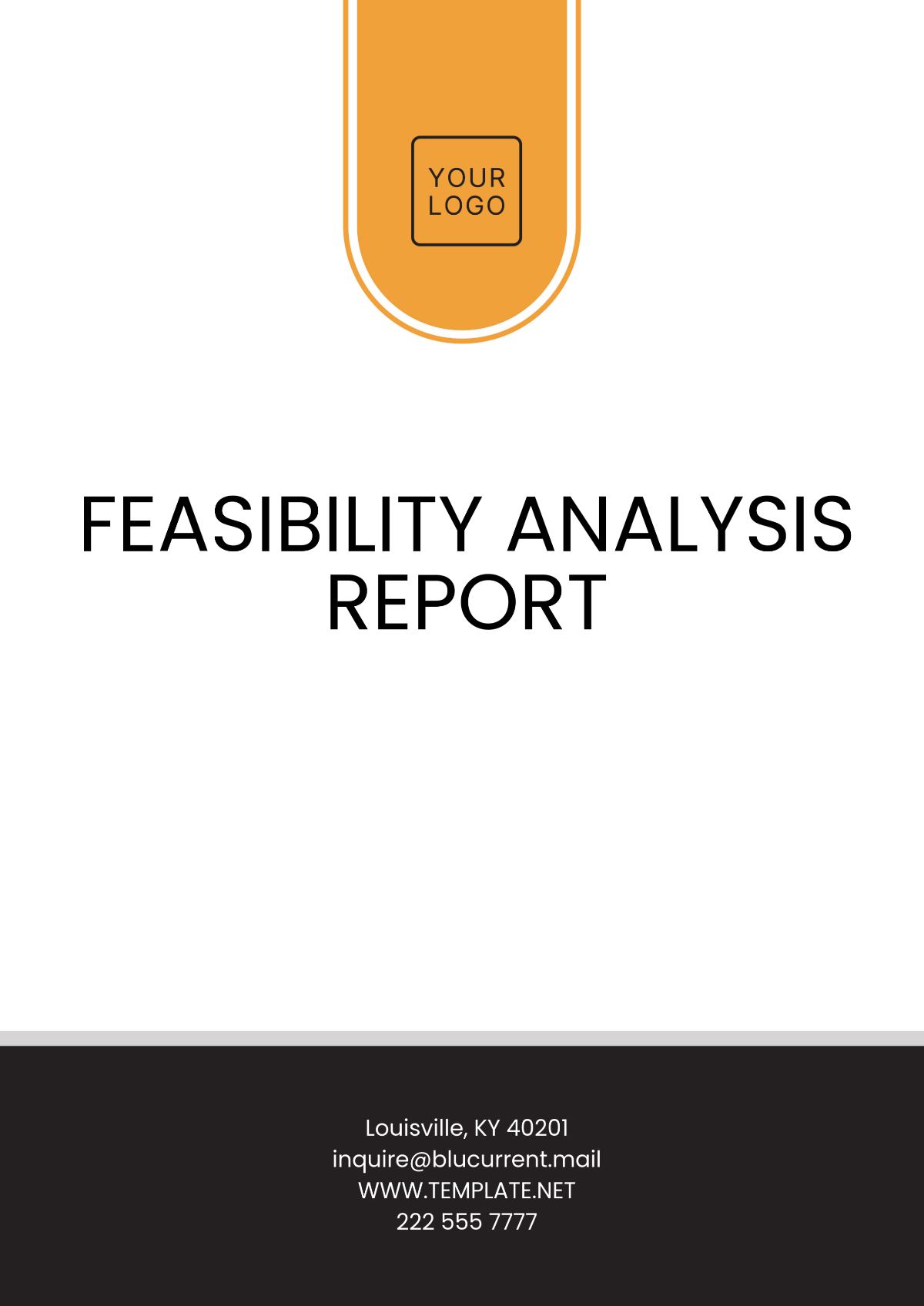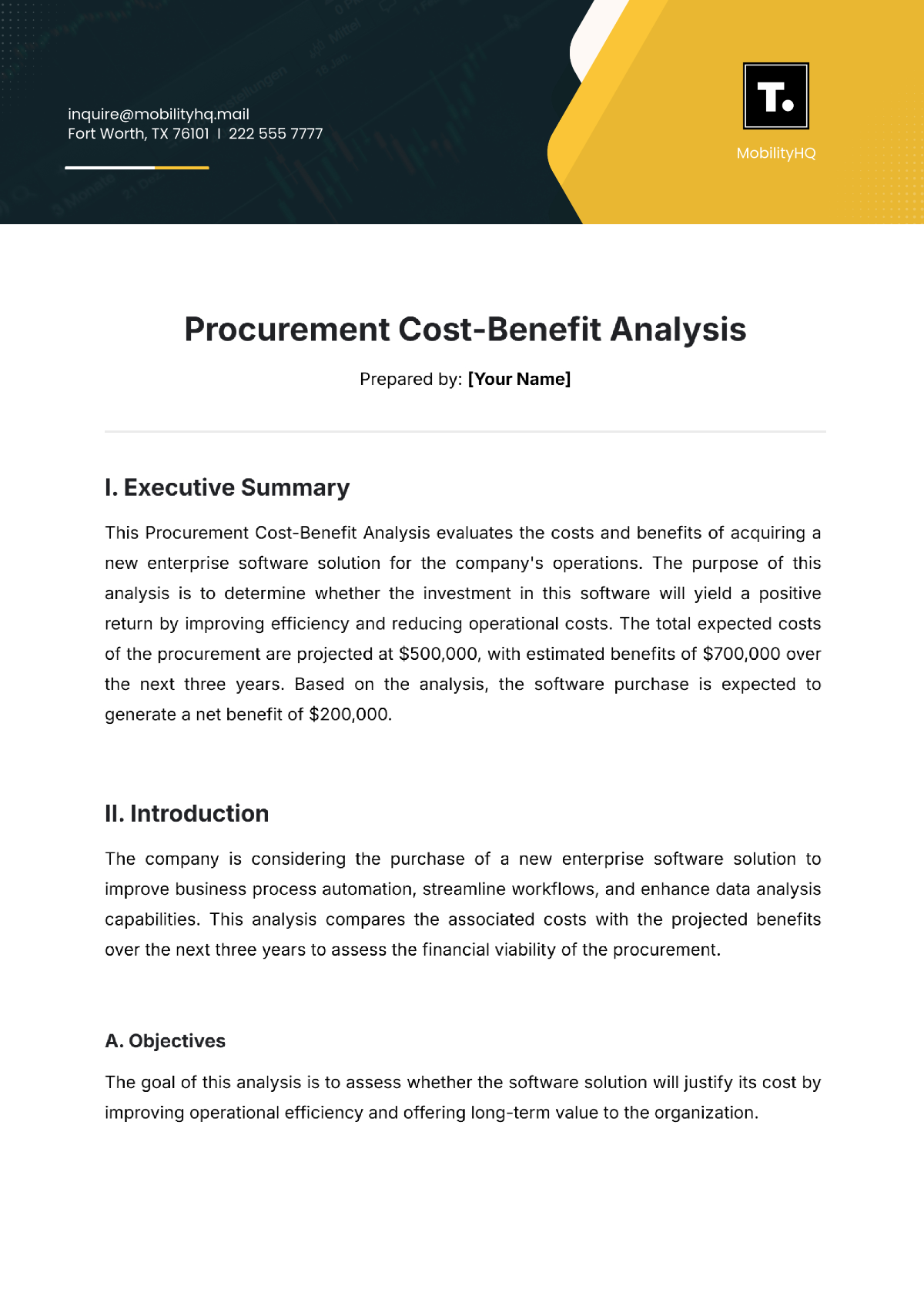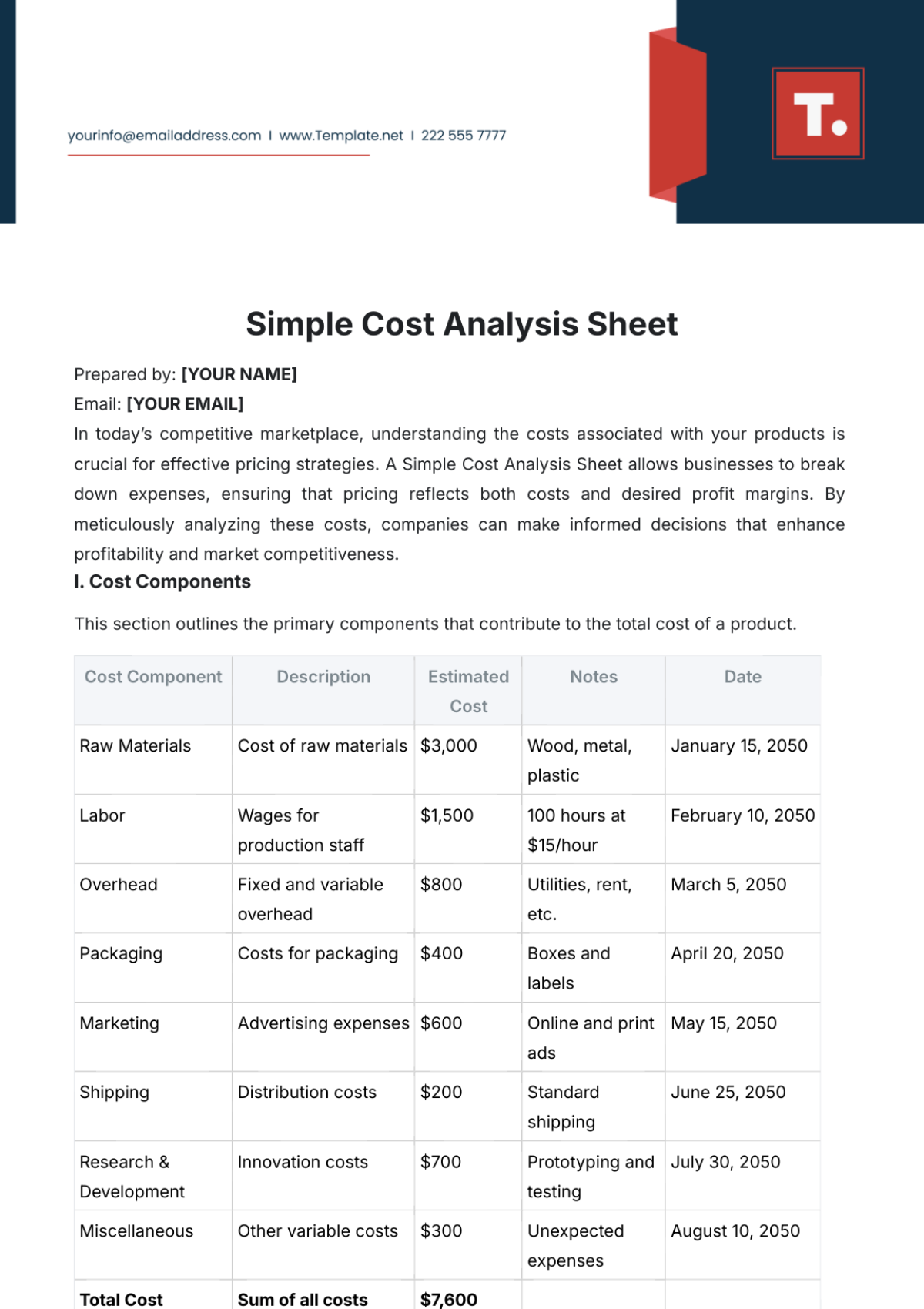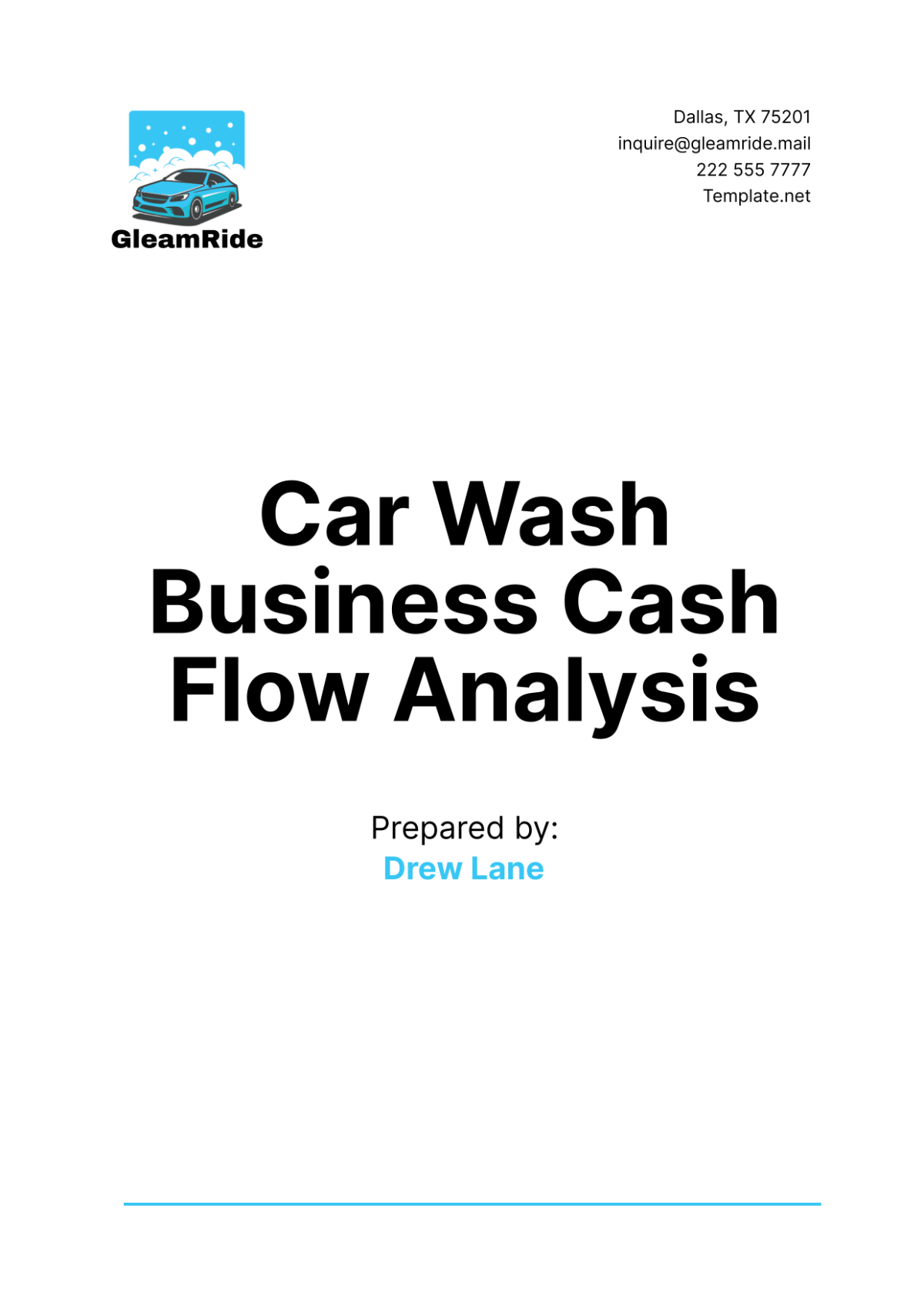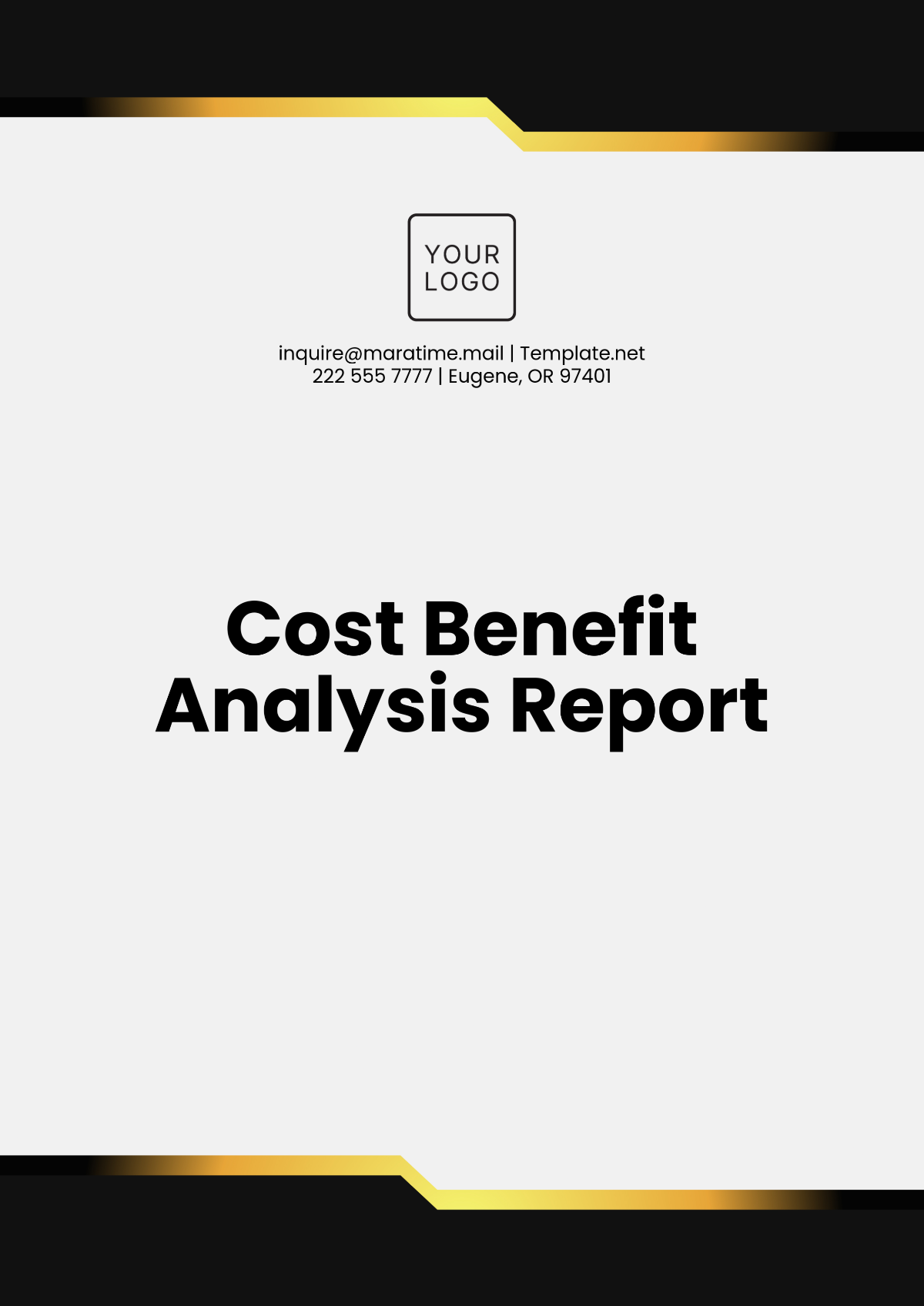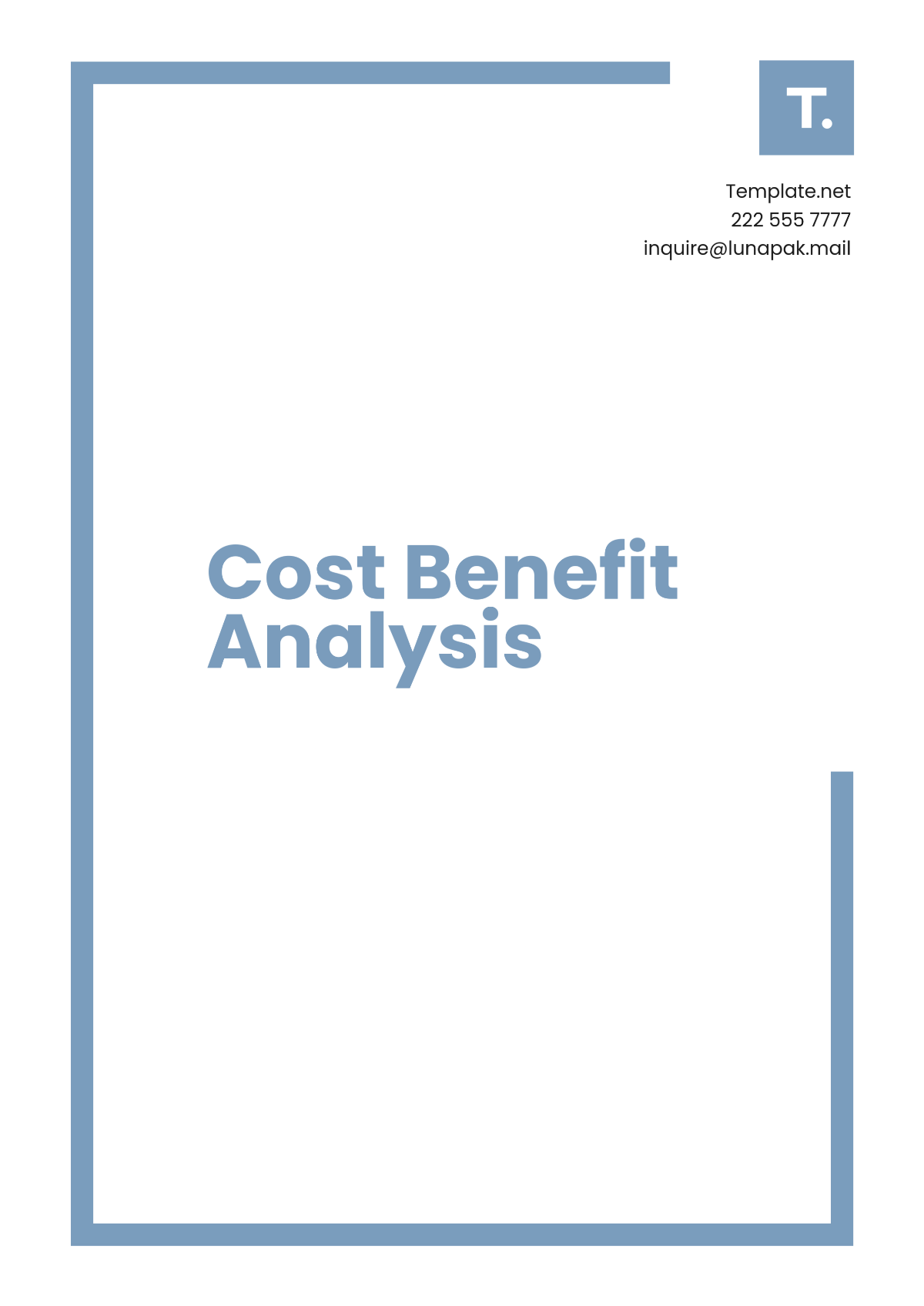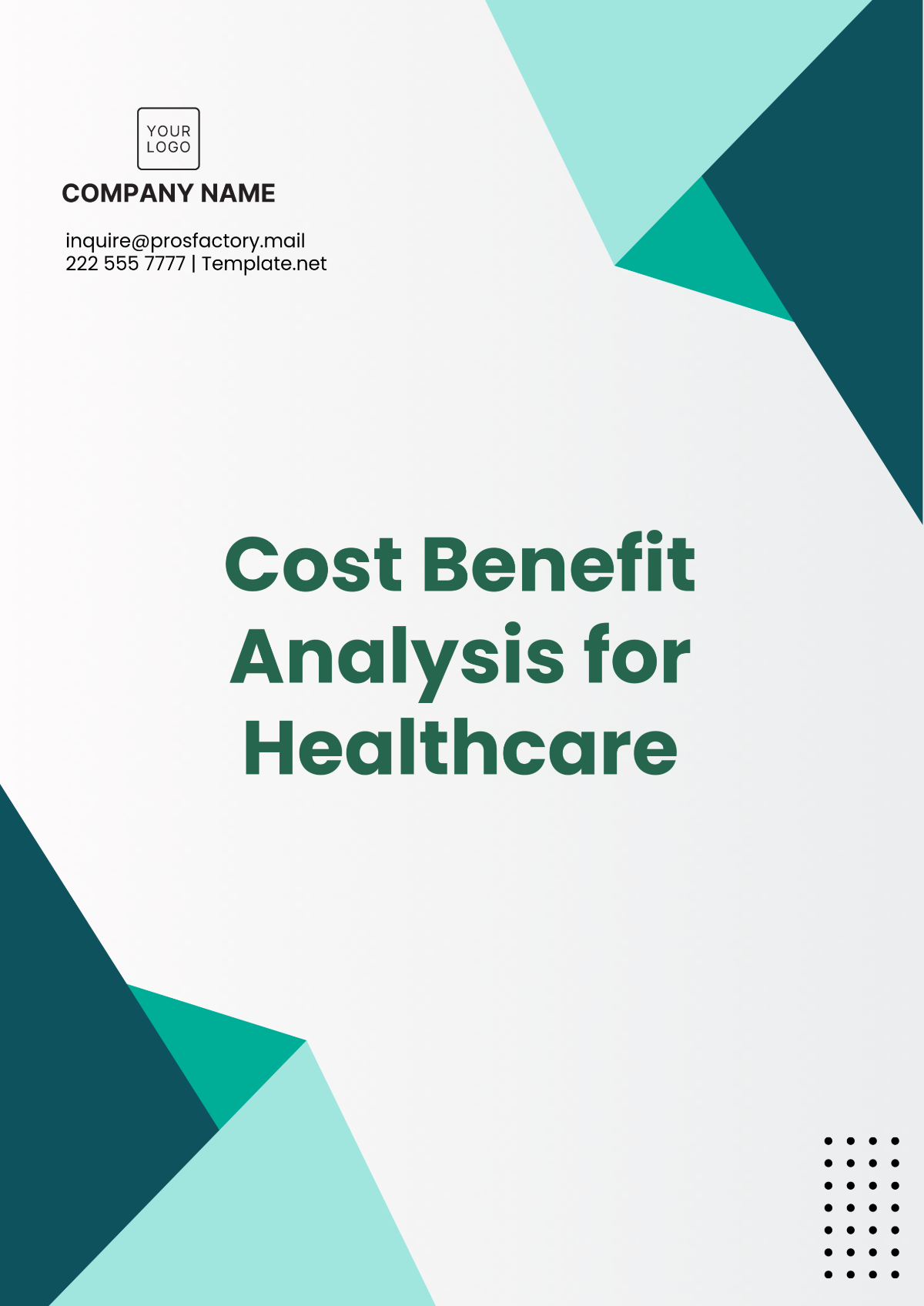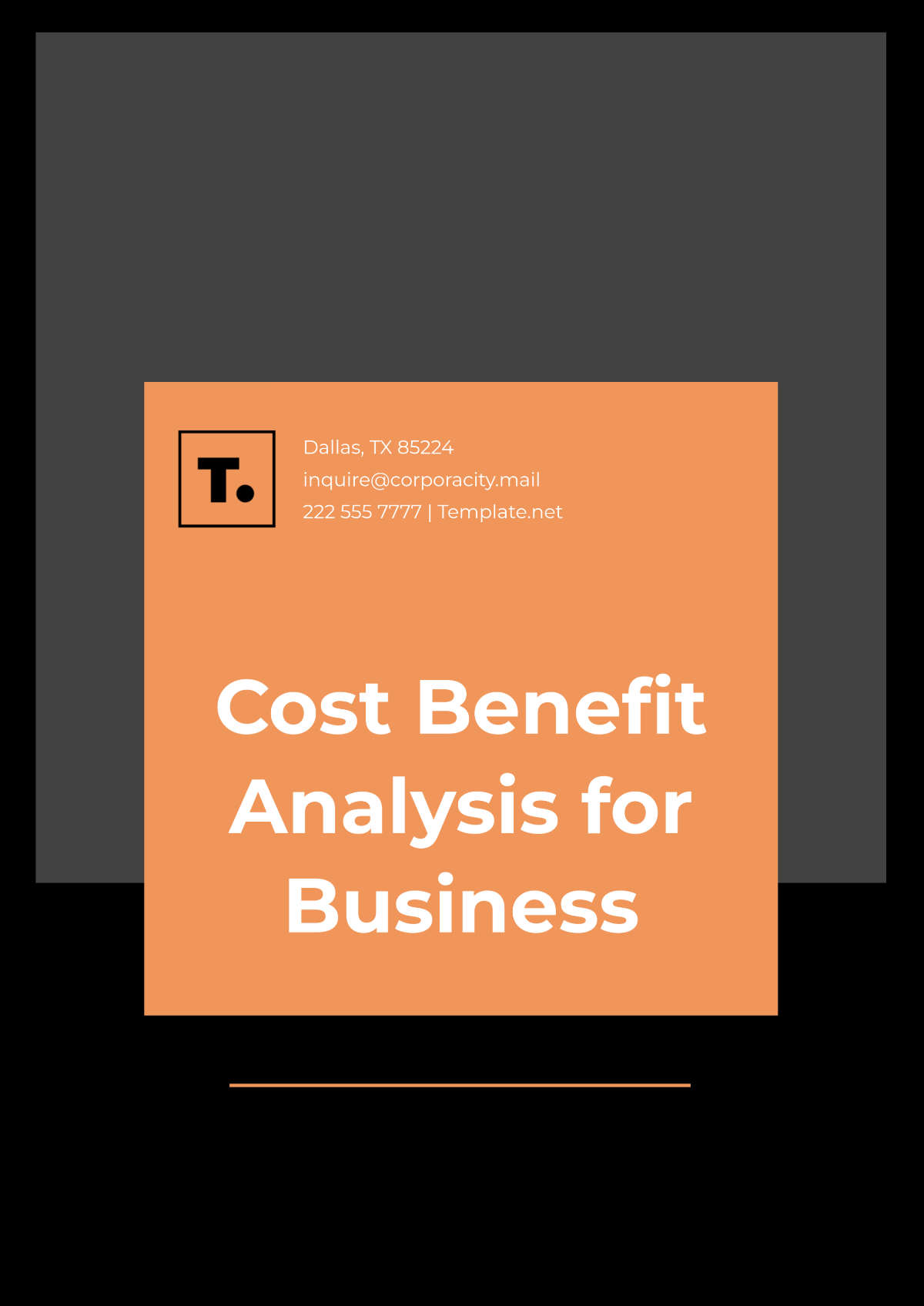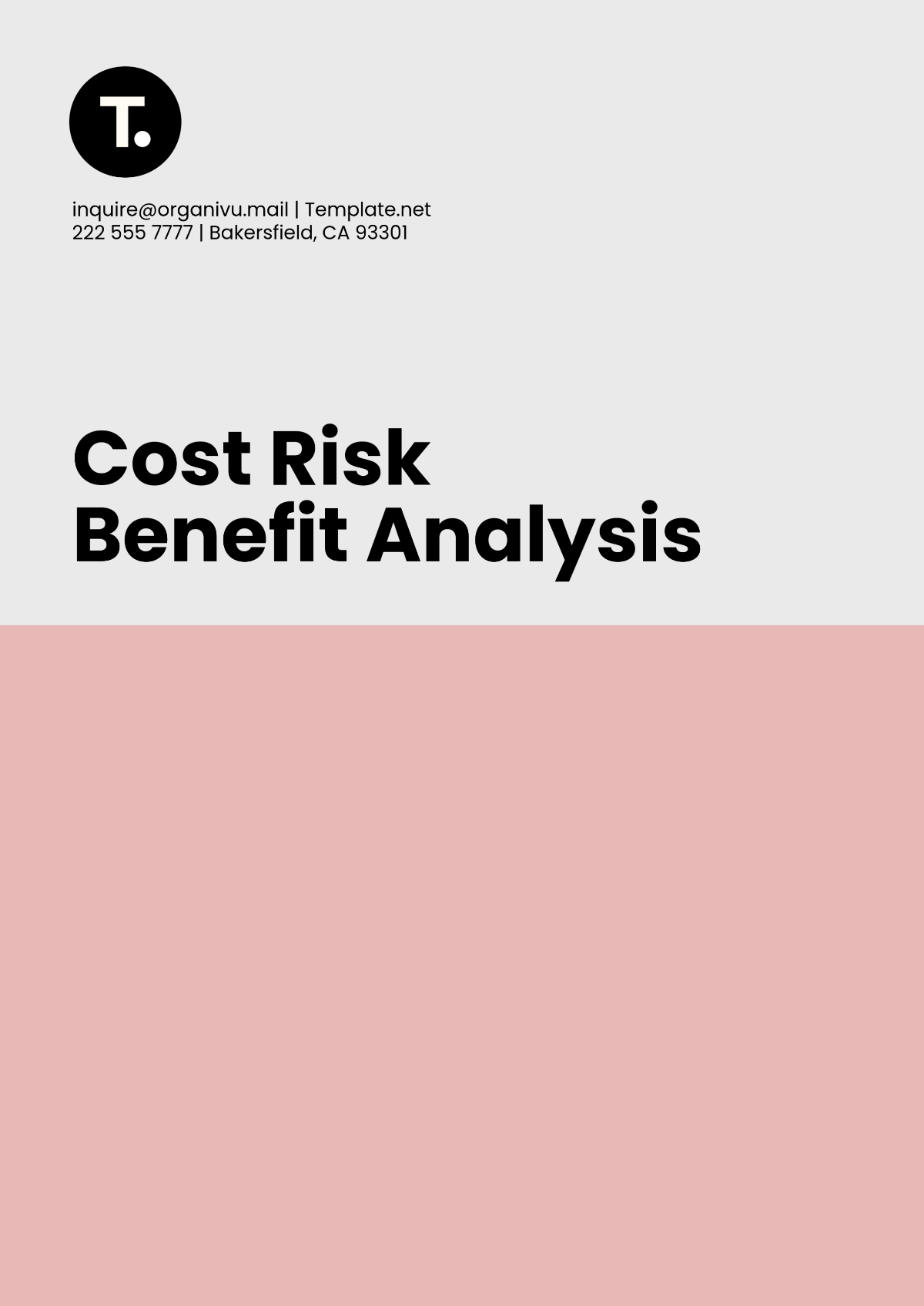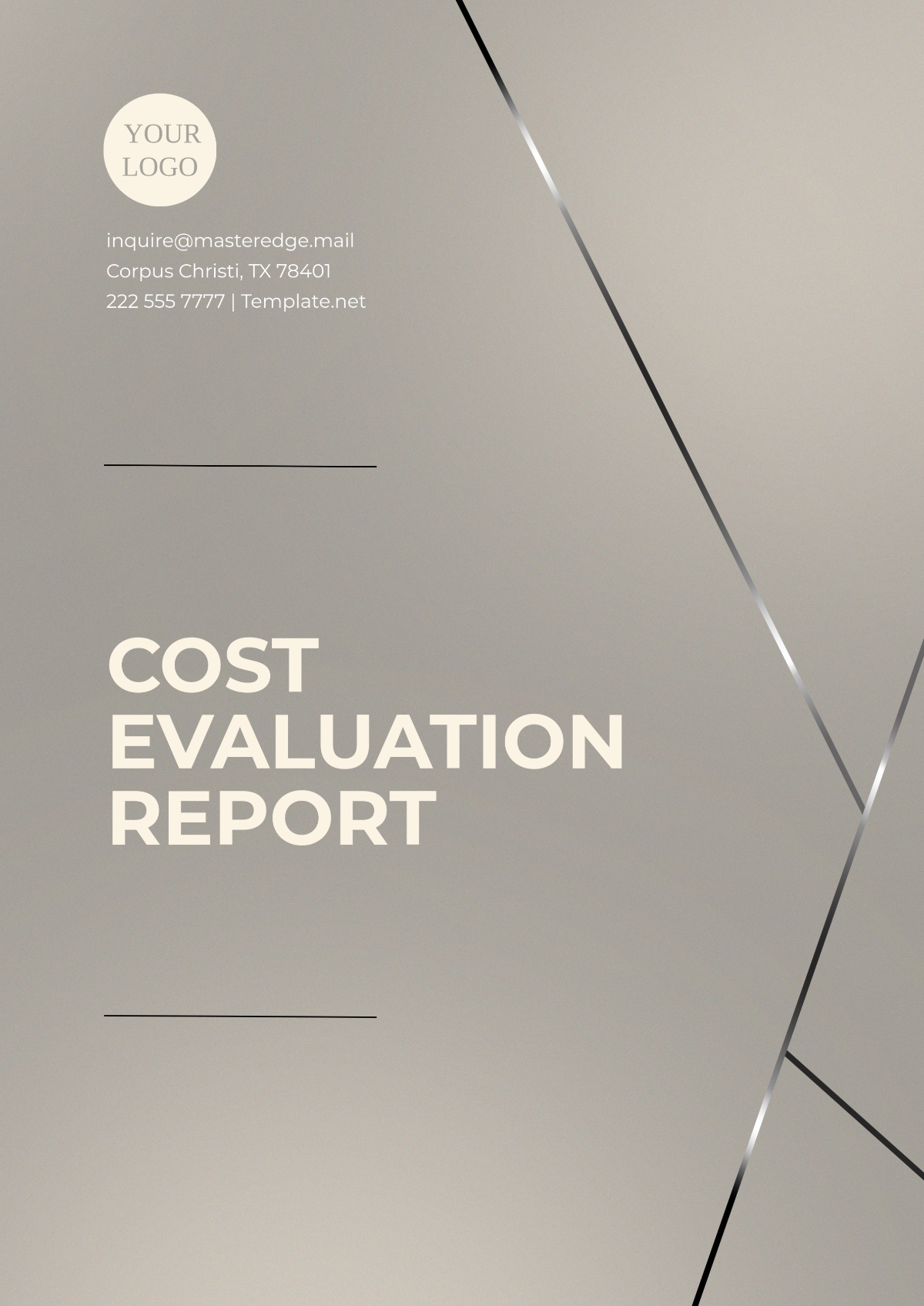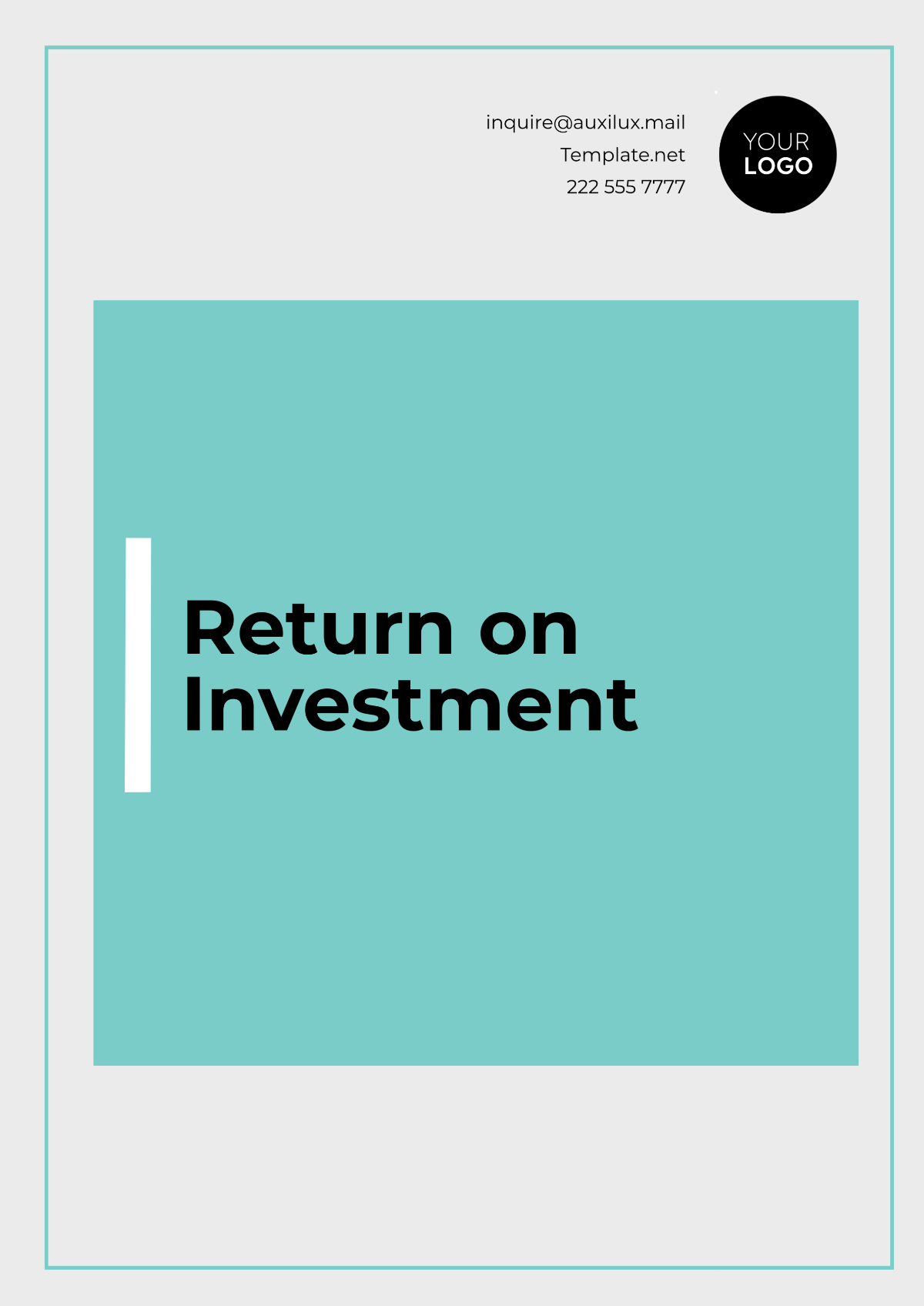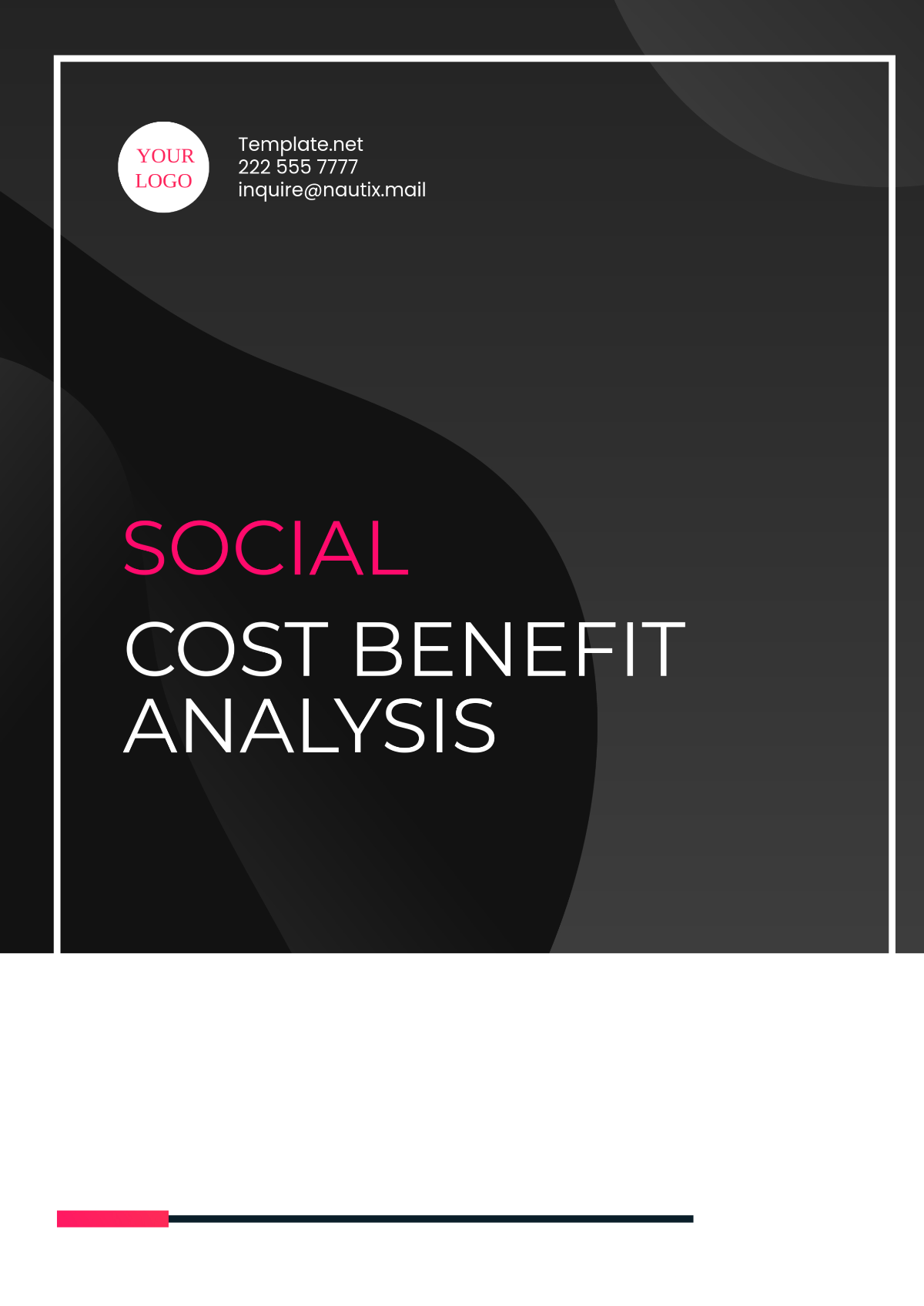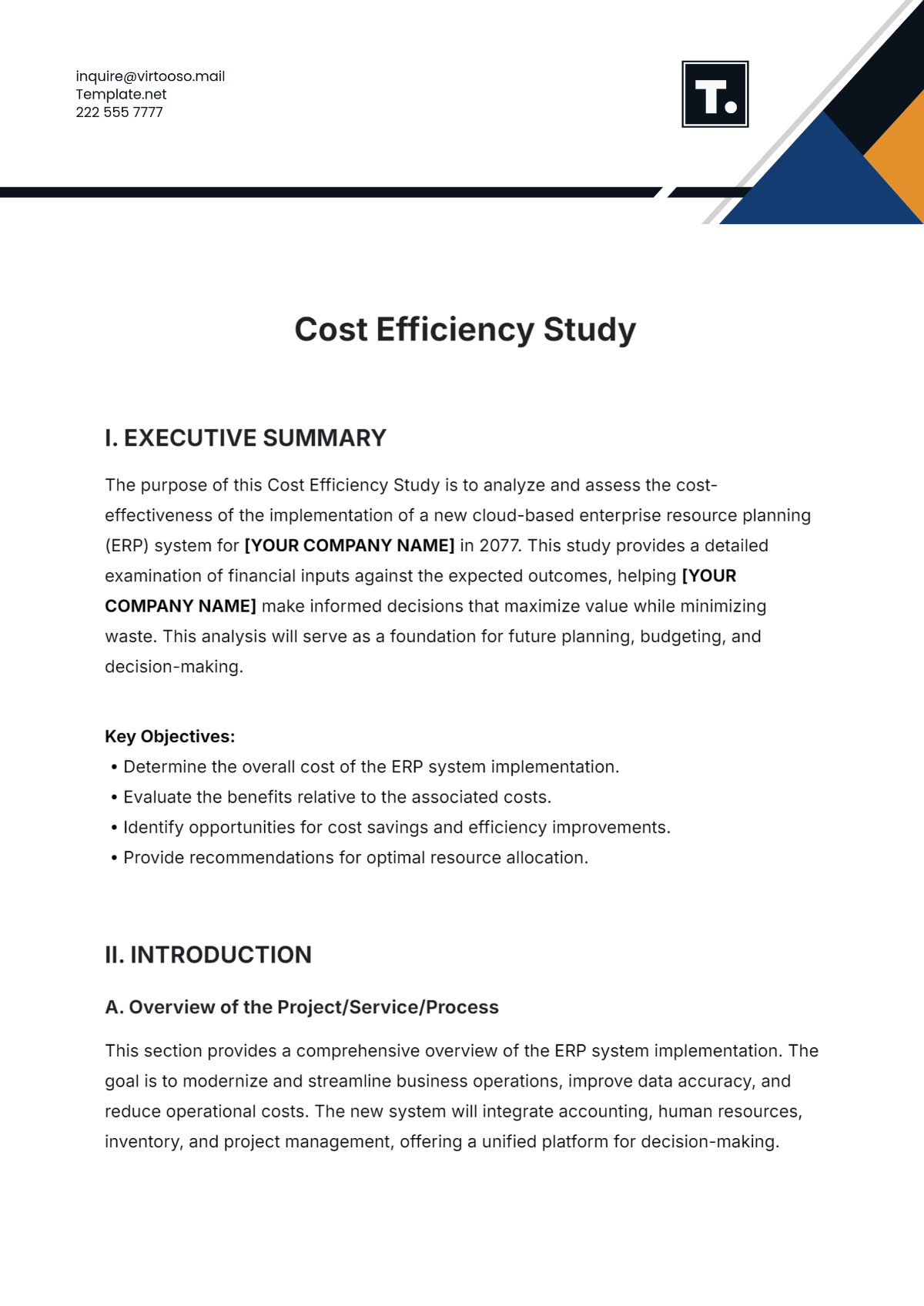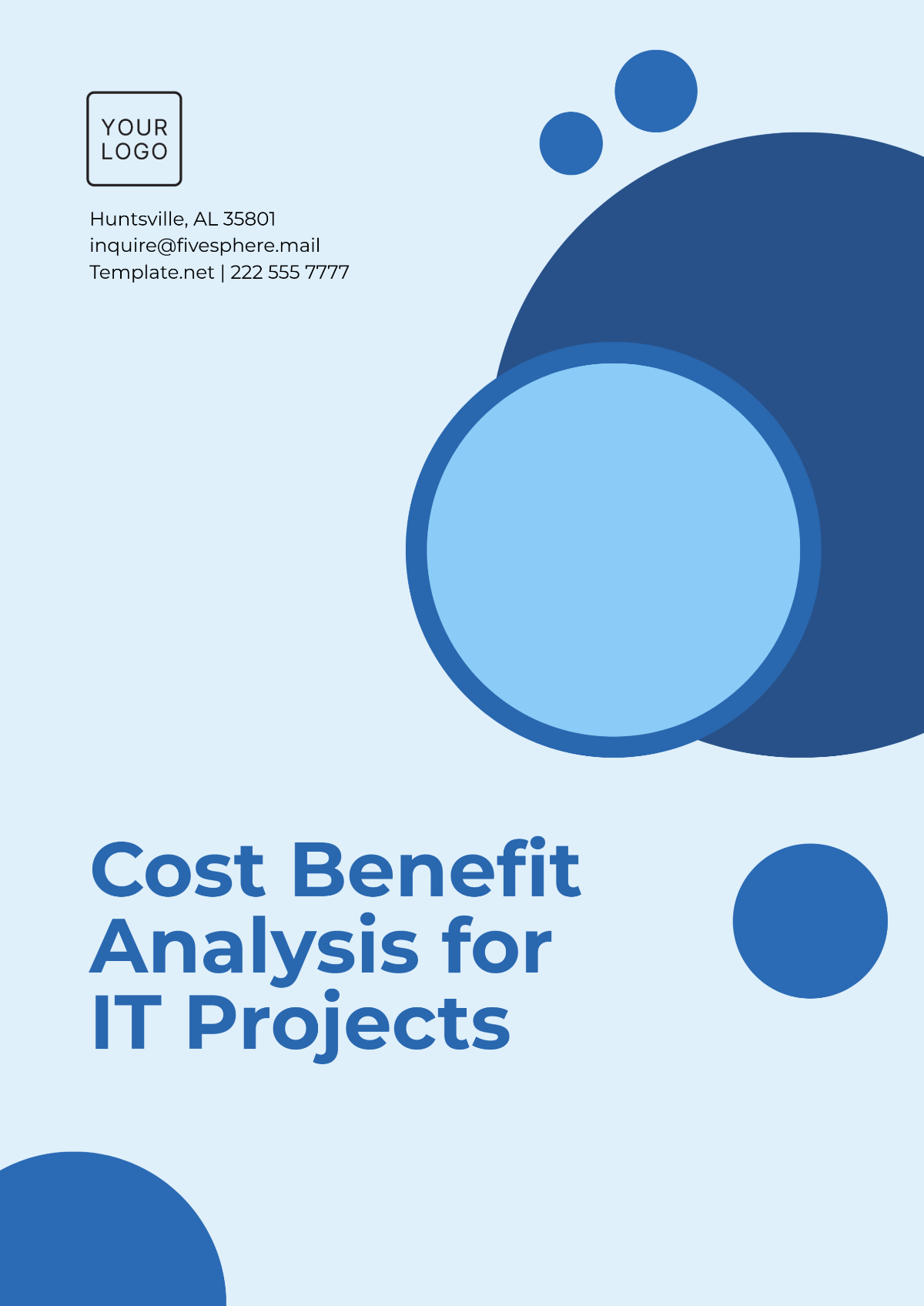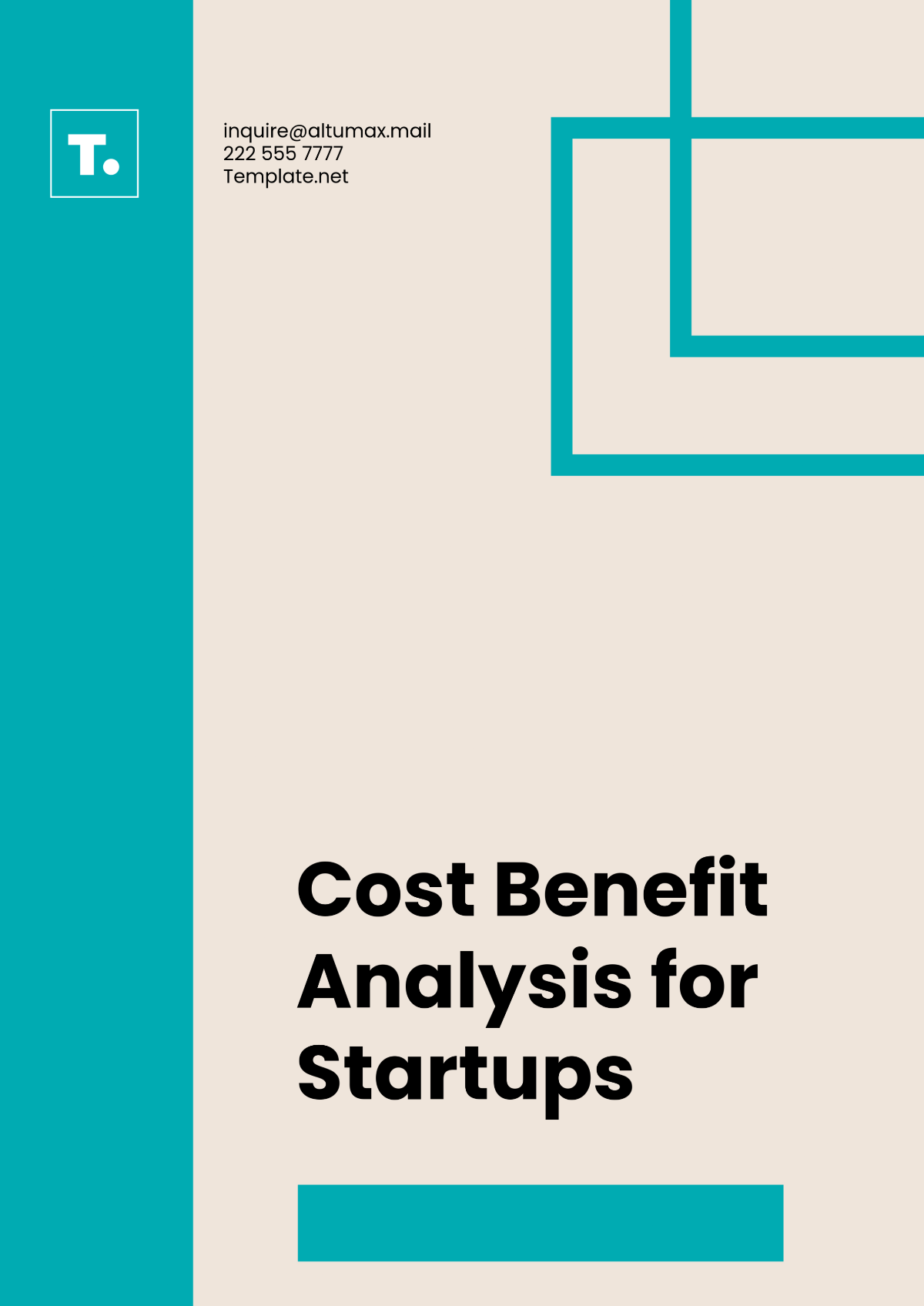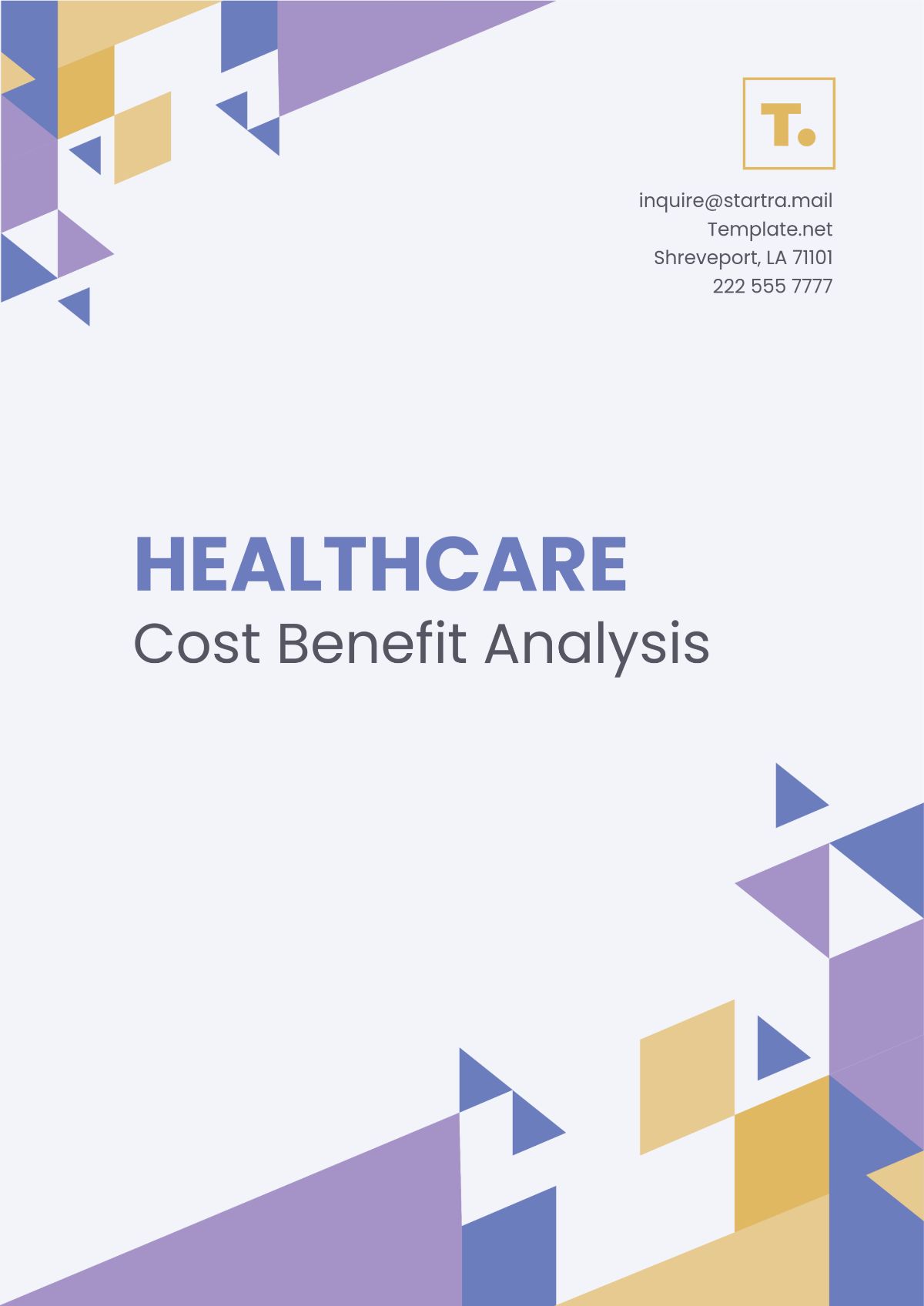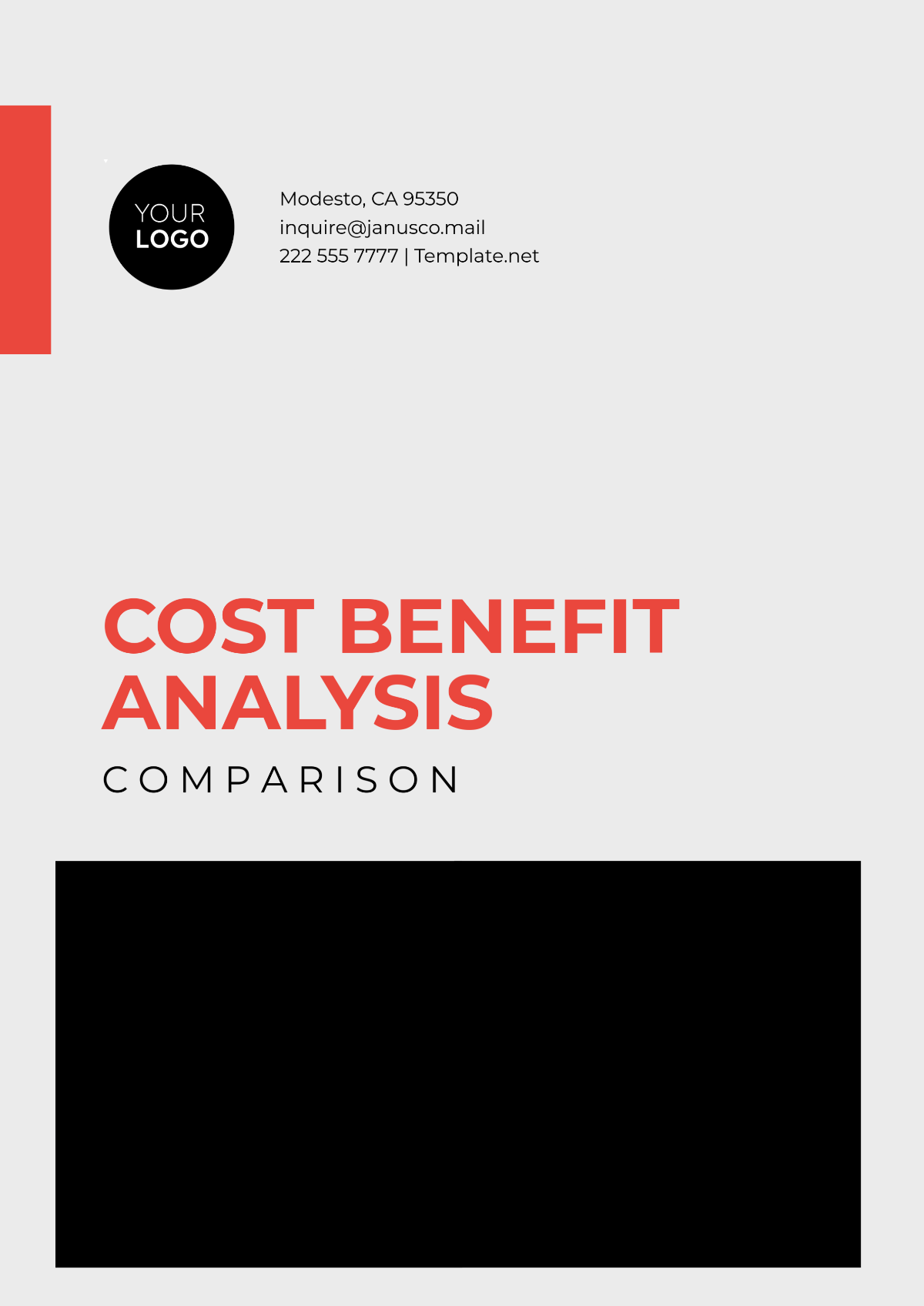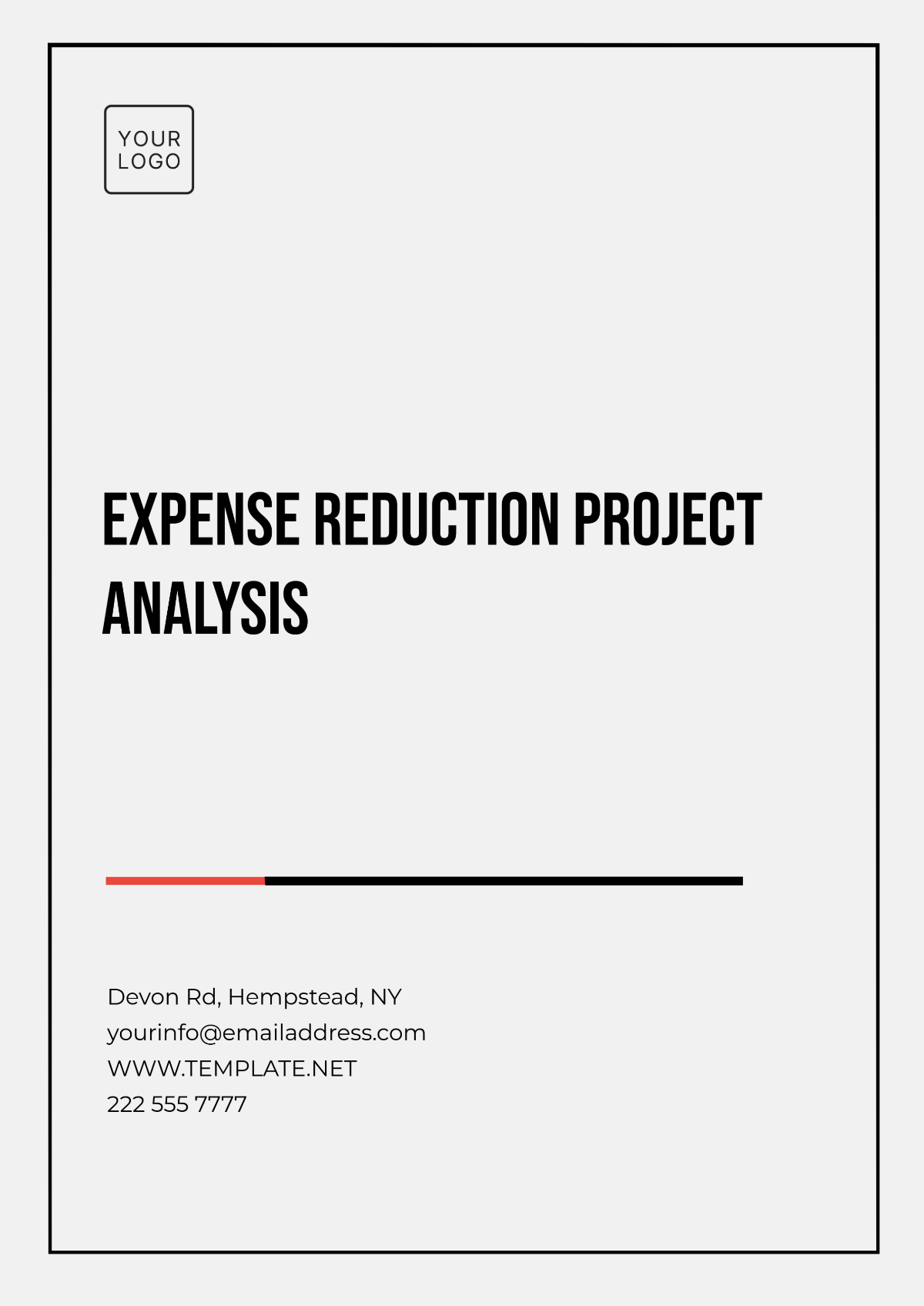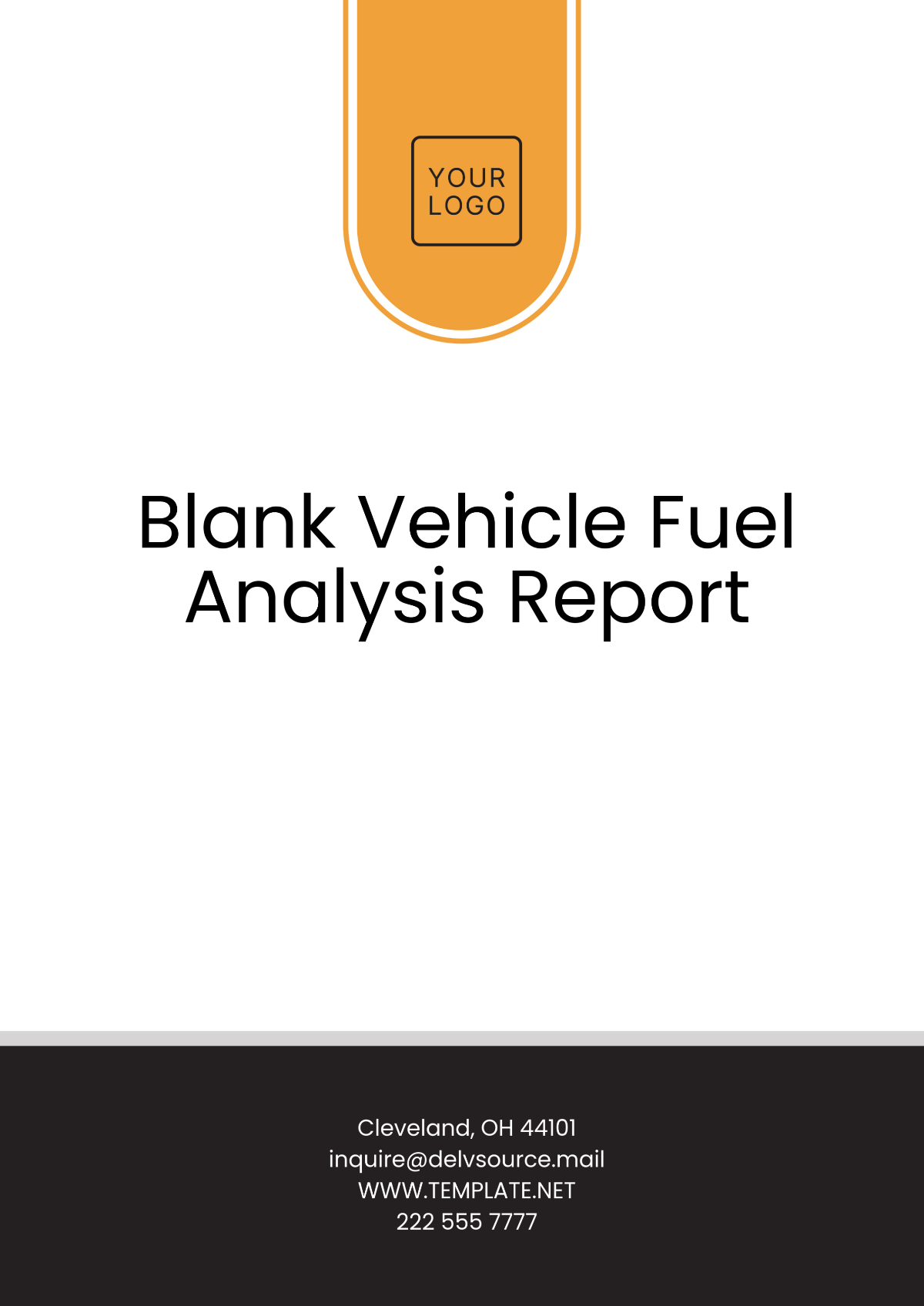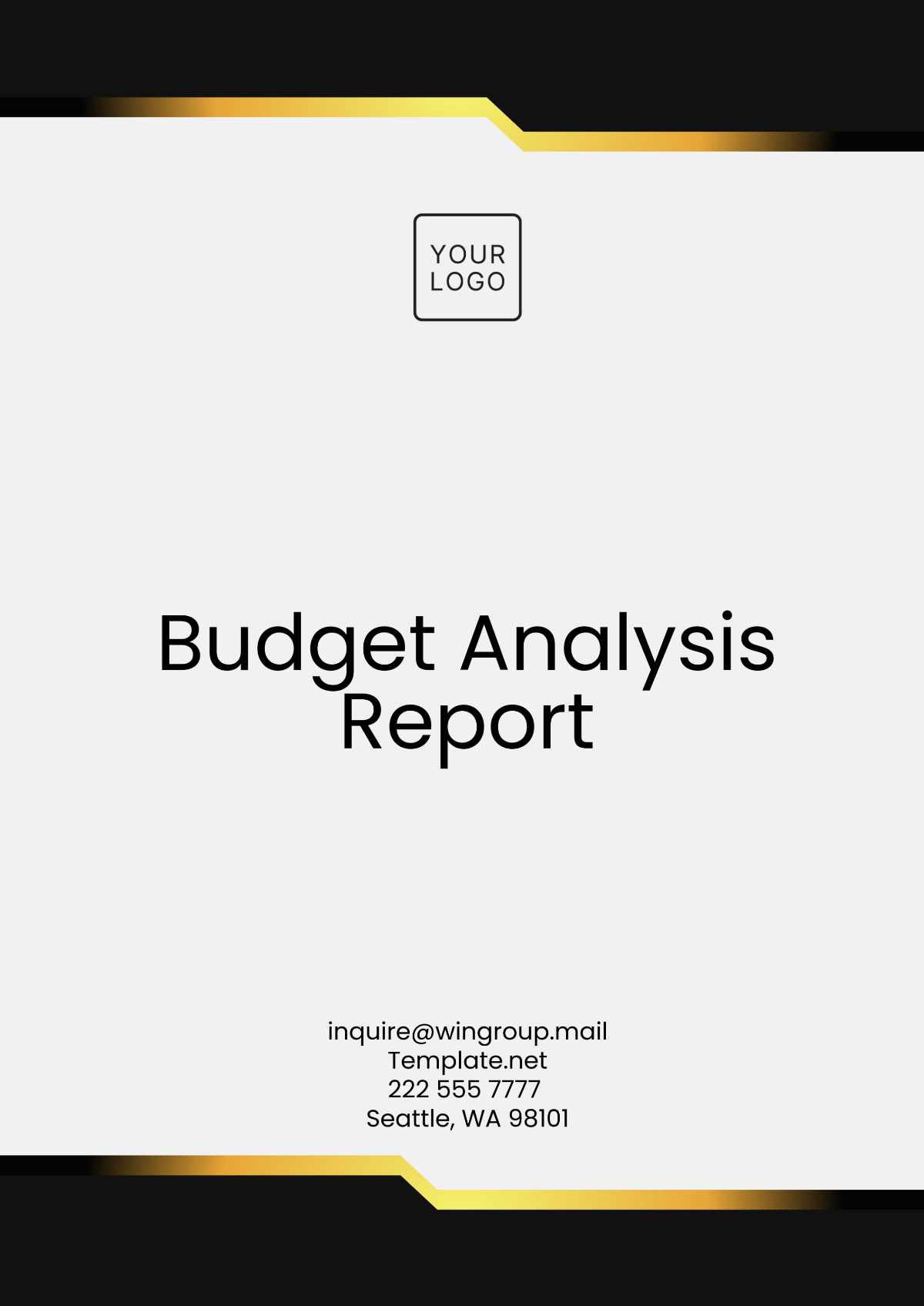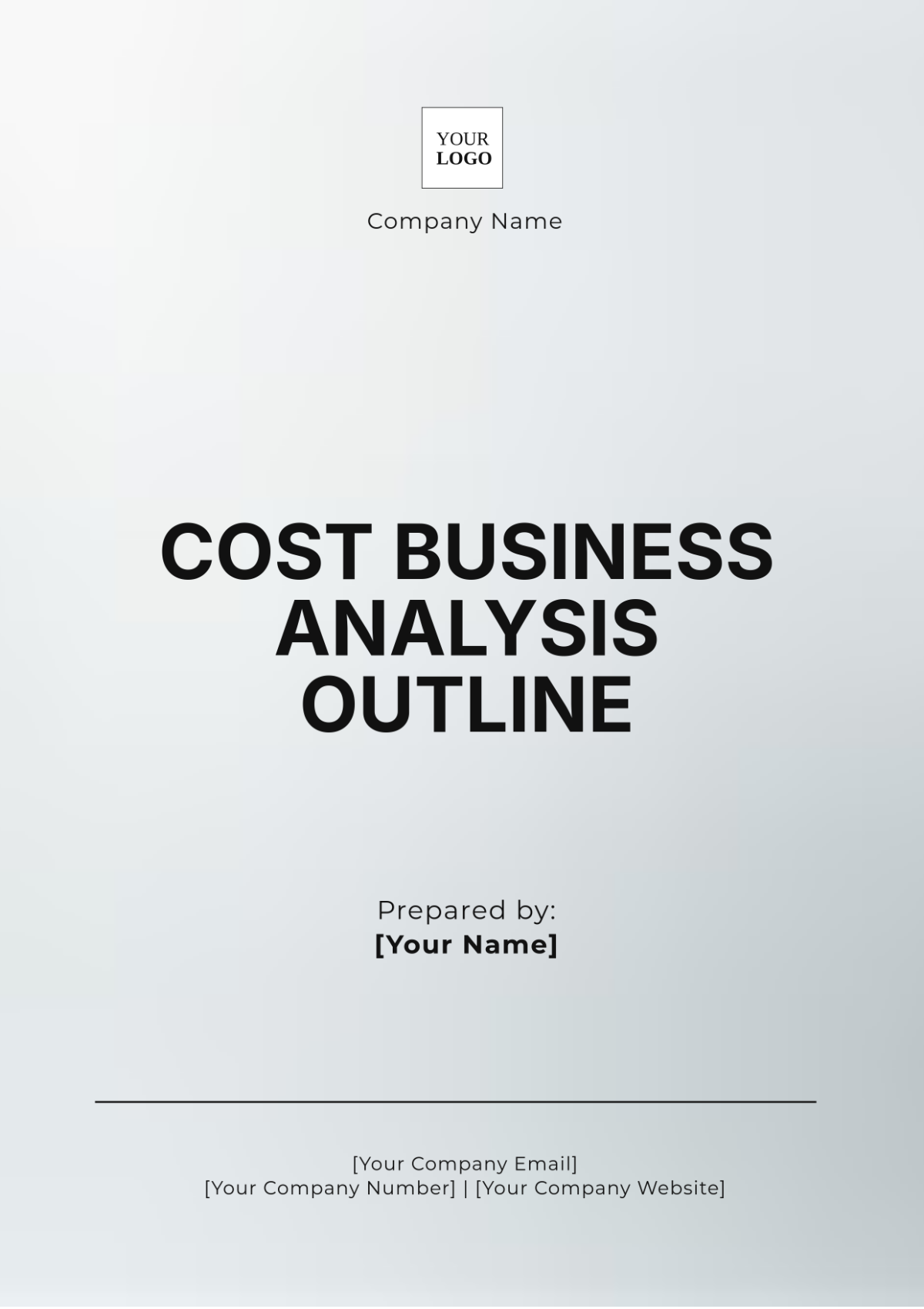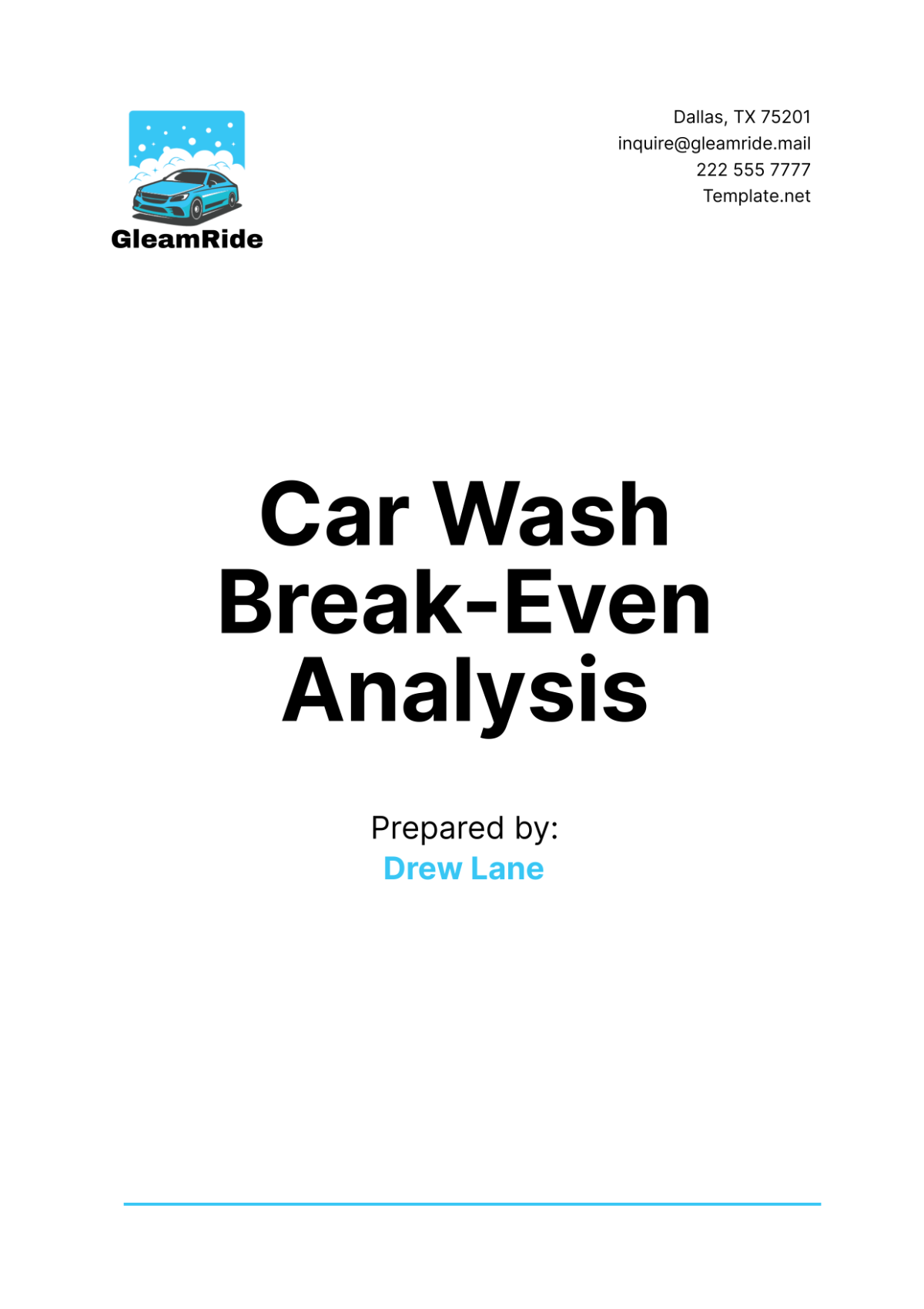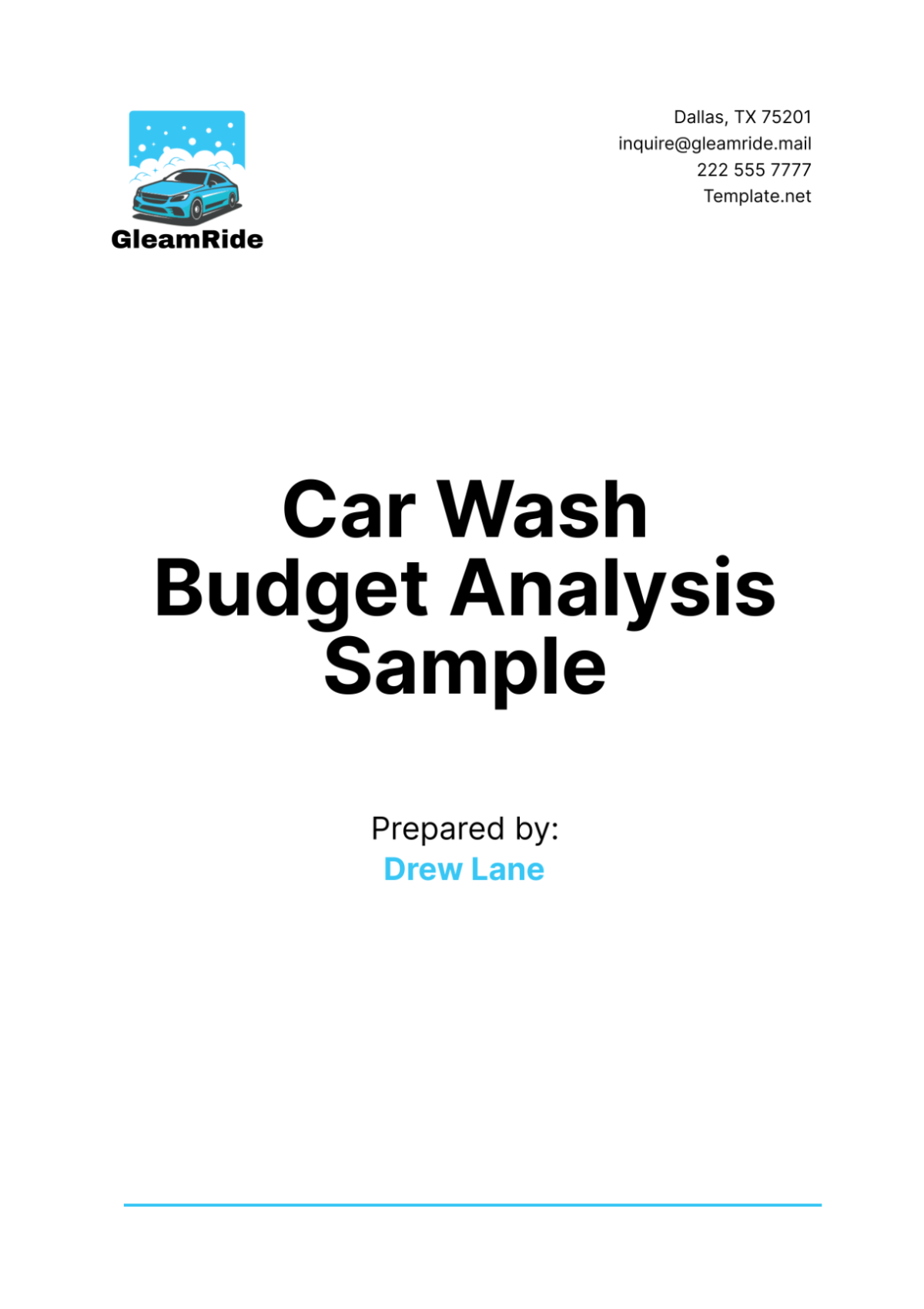Cost Benefit Analysis for IT Projects
I. Executive Summary
Purpose
The purpose of this Cost-Benefit Analysis (CBA) is to evaluate the financial and strategic implications of the Cloud-Based Customer Relationship Management (CRM) System for [YOUR COMPANY NAME]. This analysis aims to determine whether the benefits of the project outweigh its costs and to assess the return on investment (ROI).
Summary of Findings
Total Estimated Costs: $1,200,000
Total Estimated Benefits: $2,000,000
Net Present Value (NPV): $800,000
Payback Period: 2.5 years
Recommendation: Proceed with the project
II. Project Overview
Project Objectives
Implement a cloud-based CRM system to improve customer engagement.
Streamline internal processes and data management for better decision-making.
Enhance data security and backup capabilities.
Project Scope
In Scope:
Cloud infrastructure setup
CRM software installation and configuration
Employee training and onboarding
Data migration and system testing
Out of Scope:
Long-term IT support (post-implementation)
Marketing and customer outreach strategies
Key Assumptions
The cloud infrastructure provider will offer consistent uptime and performance.
Employee training will be completed within two months of system deployment.
The project will be completed within a 6-month timeline.
III. Cost Analysis
Direct Costs
Hardware: $150,000 (for cloud servers and backup solutions)
Software: $500,000 (for CRM software license and annual subscription)
Licensing Fees: $50,000 (for third-party integrations and APIs)
Infrastructure Upgrades: $100,000 (for network bandwidth and cloud storage expansion)
Indirect Costs
Training: $50,000 (employee training sessions and materials)
Change Management: $25,000 (consultation and management of employee transition)
Lost Productivity During Transition: $75,000 (estimated productivity loss during the first two months of implementation)
Total Costs
Grand Total (Direct + Indirect): $1,200,000
IV. Benefit Analysis
Tangible Benefits
Cost Savings: $600,000 (reduction in operational costs from automation and streamlining processes)
Increased Revenue: $800,000 (additional sales generated from improved customer engagement and insights)
Operational Efficiency Gains: $200,000 (improvement in internal workflows and data management)
Intangible Benefits
Improved Customer Experience: Enhanced ability to track and engage customers in real-time.
Enhanced Data Security: Stronger encryption and backup processes in place, reducing the risk of data loss.
Increased Employee Satisfaction: Improved user interface and easier access to customer information, leading to better productivity.
V. Financial Metrics
Return on Investment (ROI)
Formula: ROI=Total Benefits−Total Costs/Total Costs×100%
Calculation: ROI=2,000,000−1,200,000/1,200,000×100%=66.67%
Net Present Value (NPV)
Formula: NPV=∑Benefit−Cost/(1+r)t
Assuming a discount rate of 10% and the project benefits occurring over 5 years,
Calculation: NPV = $800,000 (NPV result after applying the discount rate)
Payback Period
Formula: Payback Period=Initial Investment/Annual Net Benefit
Calculation: Payback Period = $1,200,000 ÷ $480,000 (Annual net benefit) = 2.5 years
VI. Risk Analysis
Identified Risks
Data Migration Challenges: Potential data corruption or loss during the migration process.
Vendor Reliability: Risks associated with cloud service provider downtime or service degradation.
Employee Resistance to Change: Some employees may struggle with adopting new technologies.
Mitigation Strategies
Data Migration Testing: Implement thorough testing and validation to ensure successful data transfer.
Vendor SLA Monitoring: Choose a cloud provider with a strong Service Level Agreement (SLA) and performance guarantees.
Employee Engagement: Offer continuous training and support to ensure smooth adoption of the new system.
VII. Conclusion and Recommendations
Conclusion
Based on the analysis, the Cloud-Based CRM System project:
Is financially viable with an ROI of 66.67%.
Aligns with [YOUR COMPANY NAME]'s strategic objectives to enhance customer engagement and streamline internal processes.
Recommendations
Proceed with the project as it offers significant long-term benefits with a relatively short payback period of 2.5 years.
Suggested next steps: Finalize vendor contracts, initiate project planning, and prepare the internal team for system rollout.
VIII. Appendices
Appendix A: Detailed Cost Breakdown
Appendix B: Detailed Benefit Calculations
Appendix C: Risk Assessment Matrix
